Use LIBREHUNT & DISTROCHOOSER to find Your Perfect Linux Distro
Hello Friend.
If you have ever searched the web using the term ‘Best Linux Distro,’ you have probably been hit with a flood of options — Ubuntu, Fedora, Arch, Mint, Pop!-OS, and the list goes on. But why are there so many Distros? Why is it so complicated? That’s because, unlike Windows or MacOS, Linux doesn’t have ‘One Default Version.’ There are literally hundreds of Linux distributions, each designed with a unique purpose. Some are beginner-friendly, like Ubuntu and Linux Mint. Others, like Arch and Gentoo, cater to power users who want complete control. Then there are distros for privacy, gaming, lightweight systems, and so on. It’s no wonder that many users feel lost, and while this option to choose is empowering, for beginners, it can be overwhelming. Along with that, if you ask someone for advice, they might reply with ‘Just install Arch’ or ‘go with Fedora or Ubuntu’, but the problem is, what works for them might not work for you. Everyone’s needs, hardware, and experience levels are different.
So to help you with this issue, two amazing websites were created, which were designed to simplify your distro search. These tools help to narrow down options based on your personal preferences, ensuring you find the perfect Linux distro tailored to your needs.
Our first website is LIBREHUNT.ORG. It is a sleek and beginner-friendly platform created by Indian Linux enthusiast Avi Wadhwa. According to Avi, “One day, a schoolmate saw my fancy Linux install on my laptop and asked how I did it. After I explained what Linux is, my friend immediately wanted it as well, but he struggled to decide which distro to start with due to the overwhelming number of options. This incident inspired me to create this website to help beginners and advanced users easily find their ideal Linux distribution.”
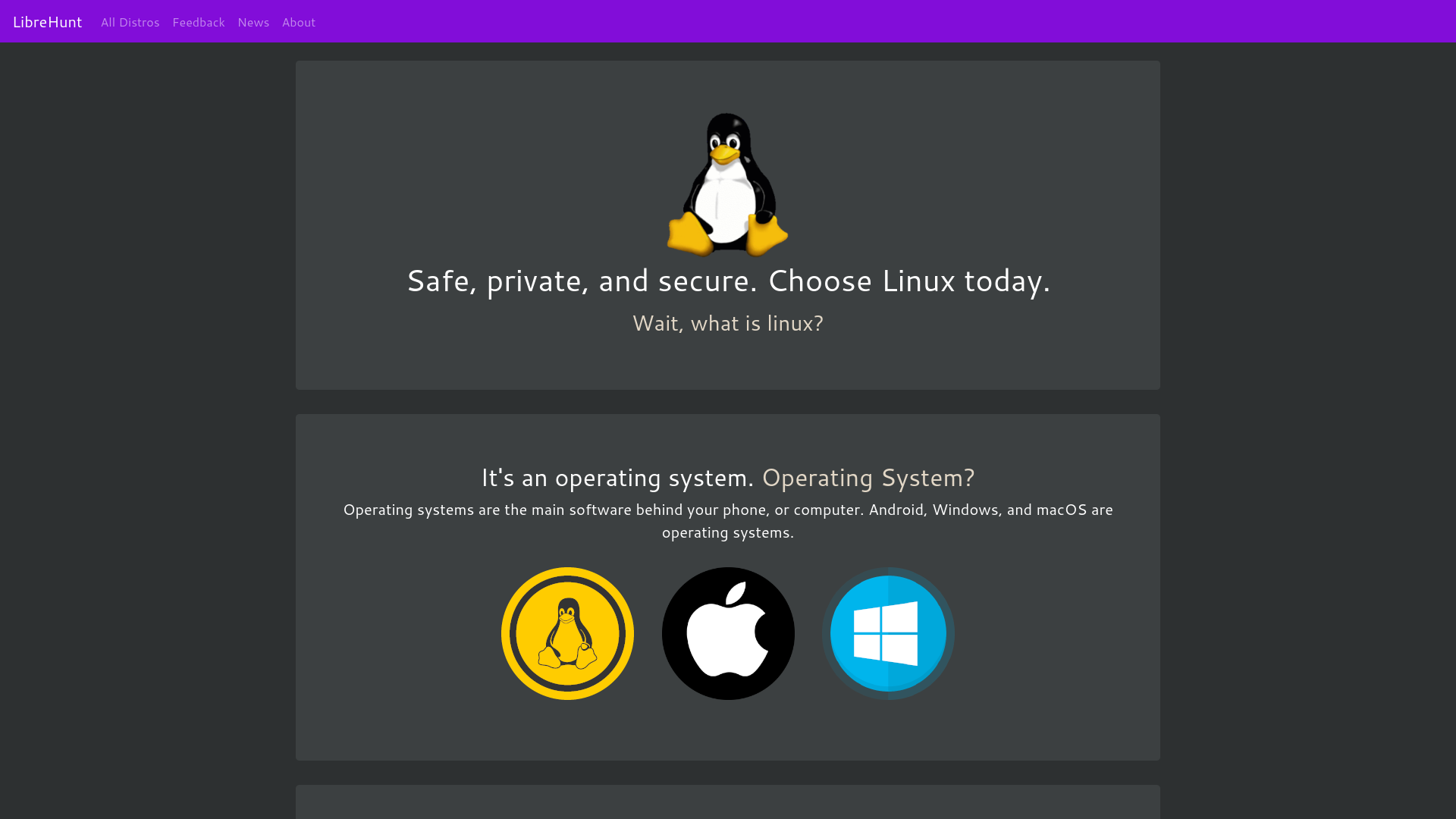

So, how does LIBREHUNT achieve this? LIBREHUNT assists users in choosing a Linux distribution based on their needs, determined by their answers to various objective questions.
LIBREHUNT Walk-Through
When you first land on the LIBREHUNT homepage, you will find basic information about what an operating system is, how Linux differs from other operating systems, and why you should choose Linux over Windows or MacOS. Additionally, it includes information about the main characteristics of Linux, such as security and privacy, lightweight nature, openness, and excellent customisation options.
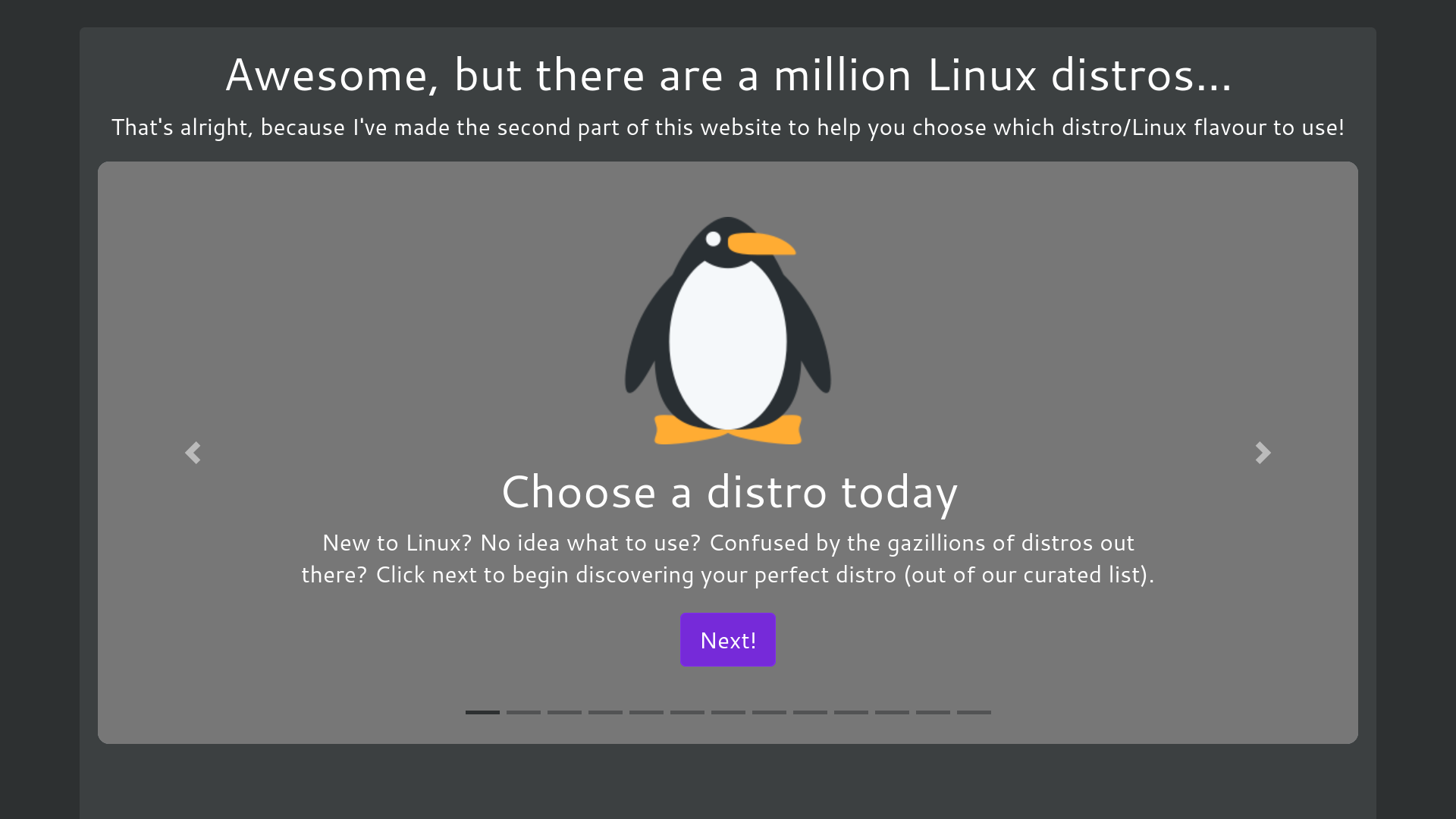
At the bottom of the page, you will find the tool to help you find your perfect Linux distro. The test consists of 11 questions covering topics such as use case, Linux expertise, hardware architecture, support, method of installation, software, and operating system updates. According to LIBREHUNT: - You can skip questions at any time. - You can change your answers whenever you wish.
After completing the questions, LIBREHUNT’s algorithm will suggest several options from a curated list of 45 distros.
Screenshots of LIBREHUNT Test
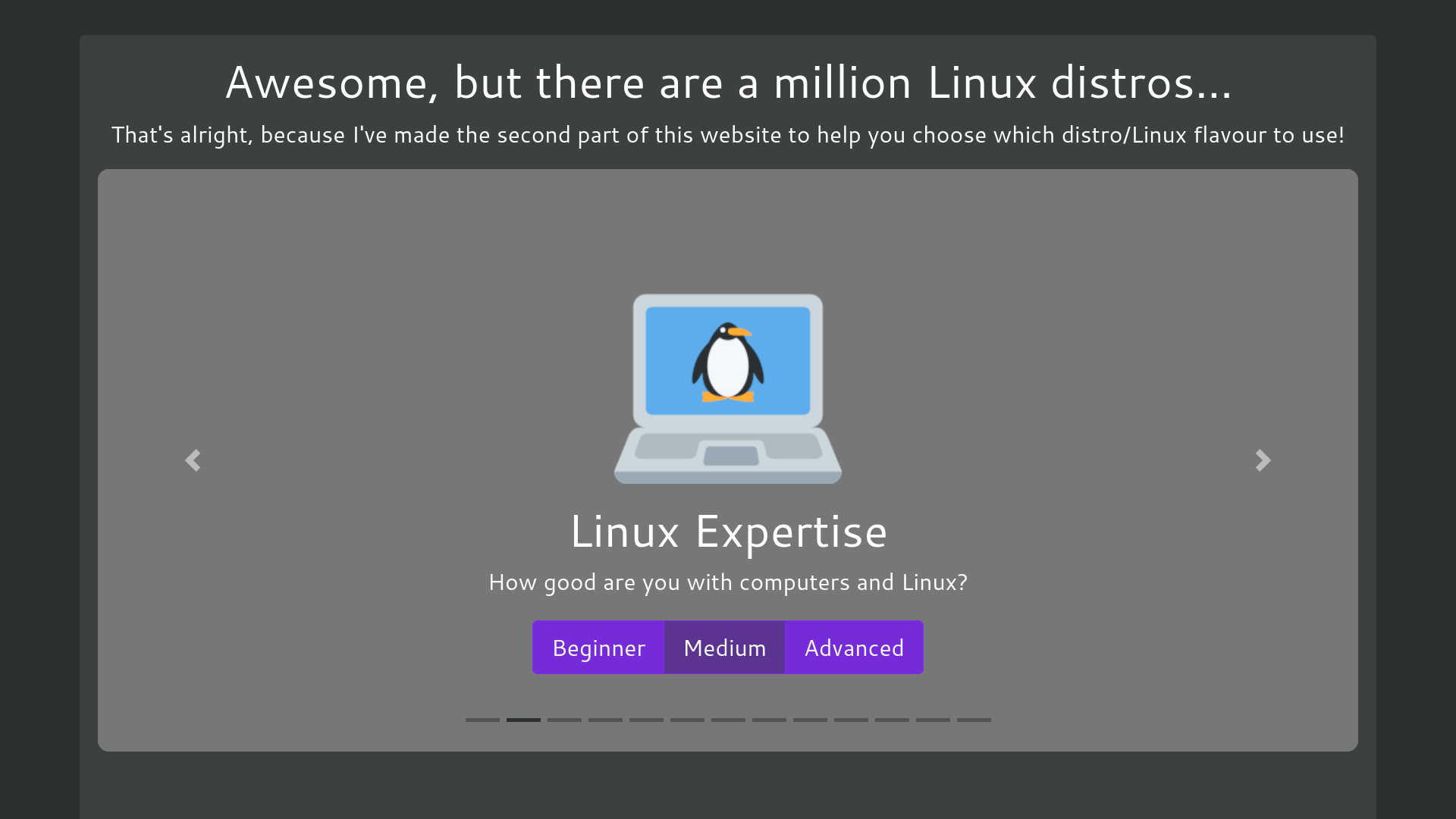
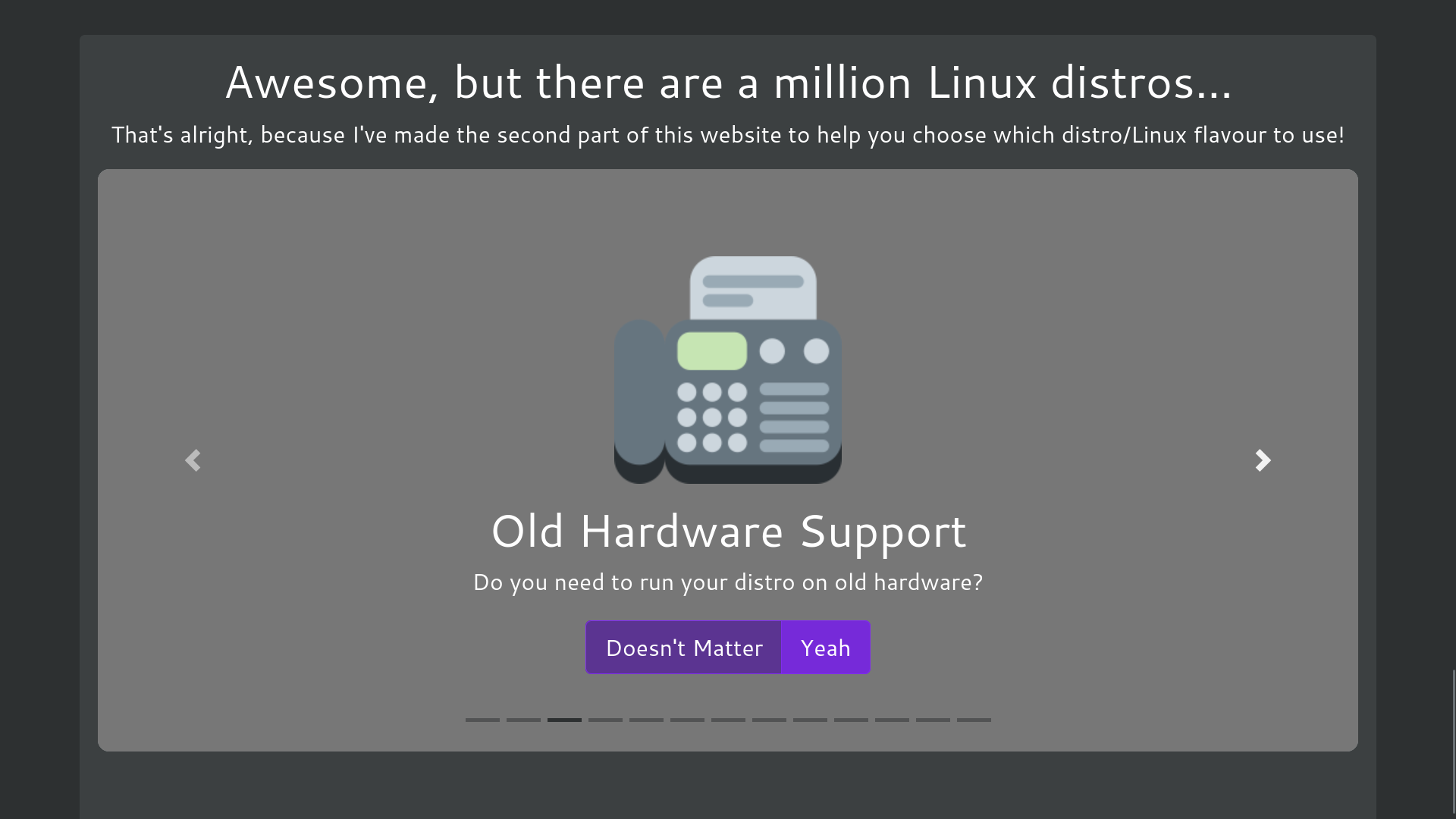
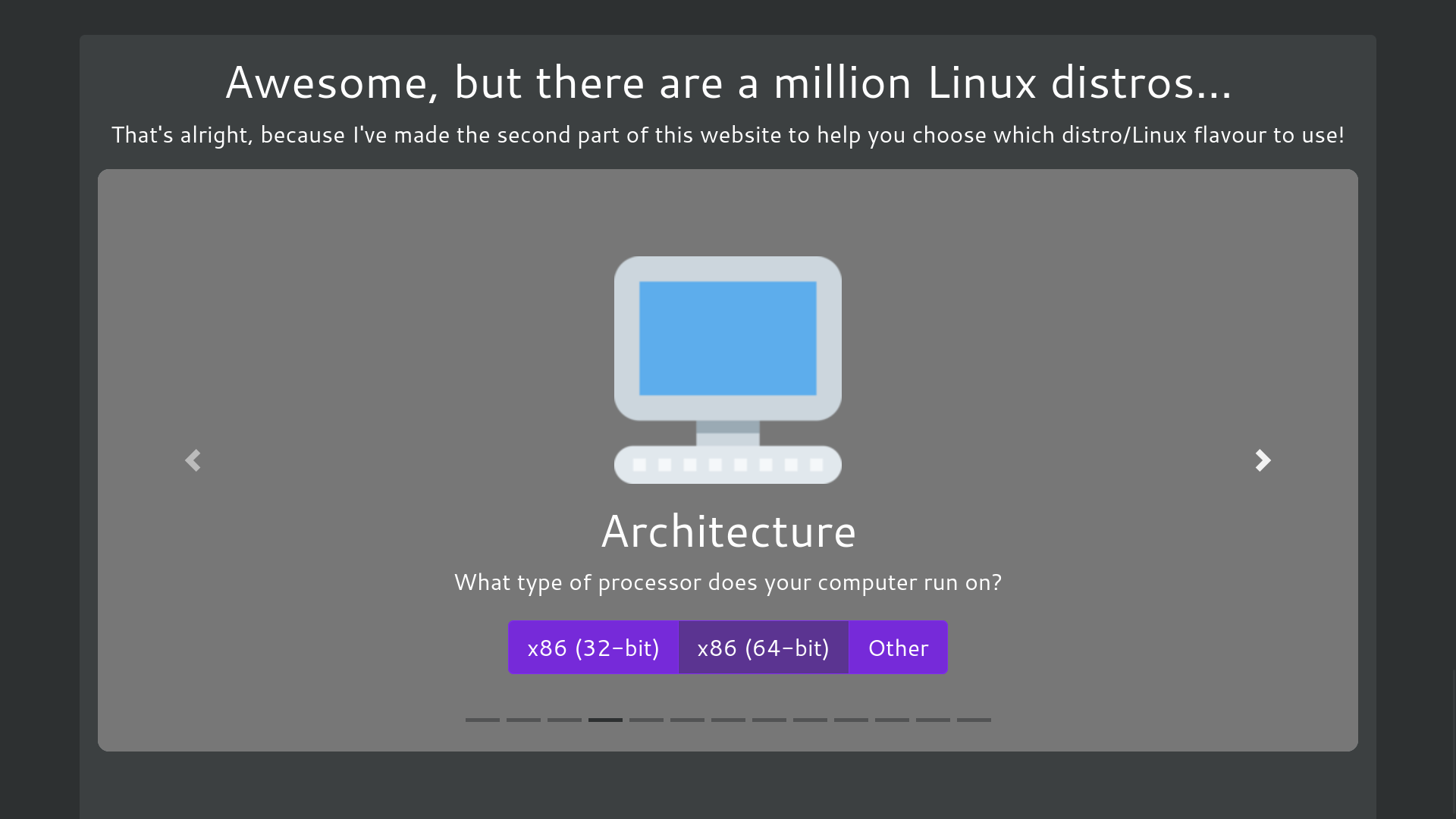
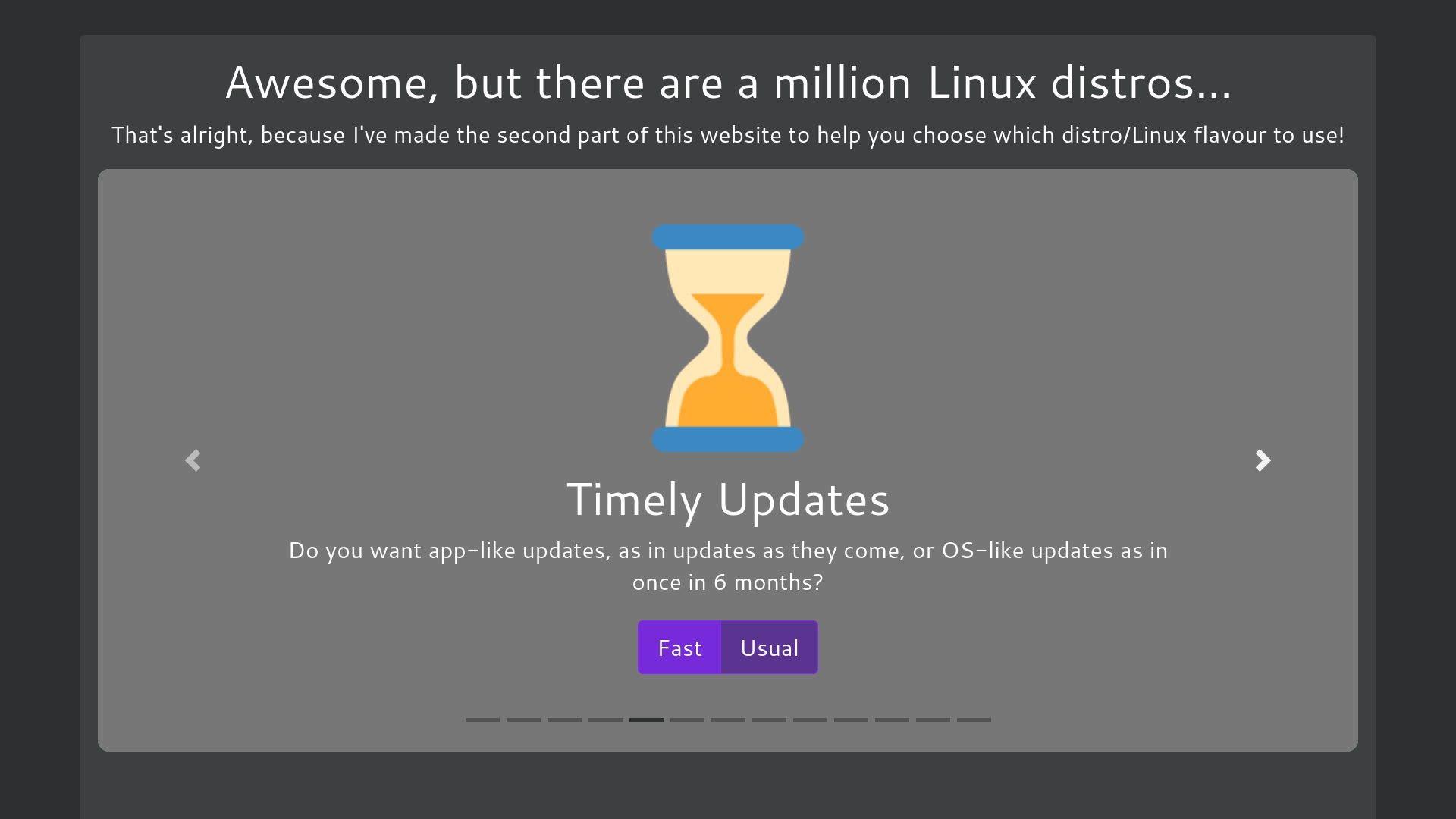
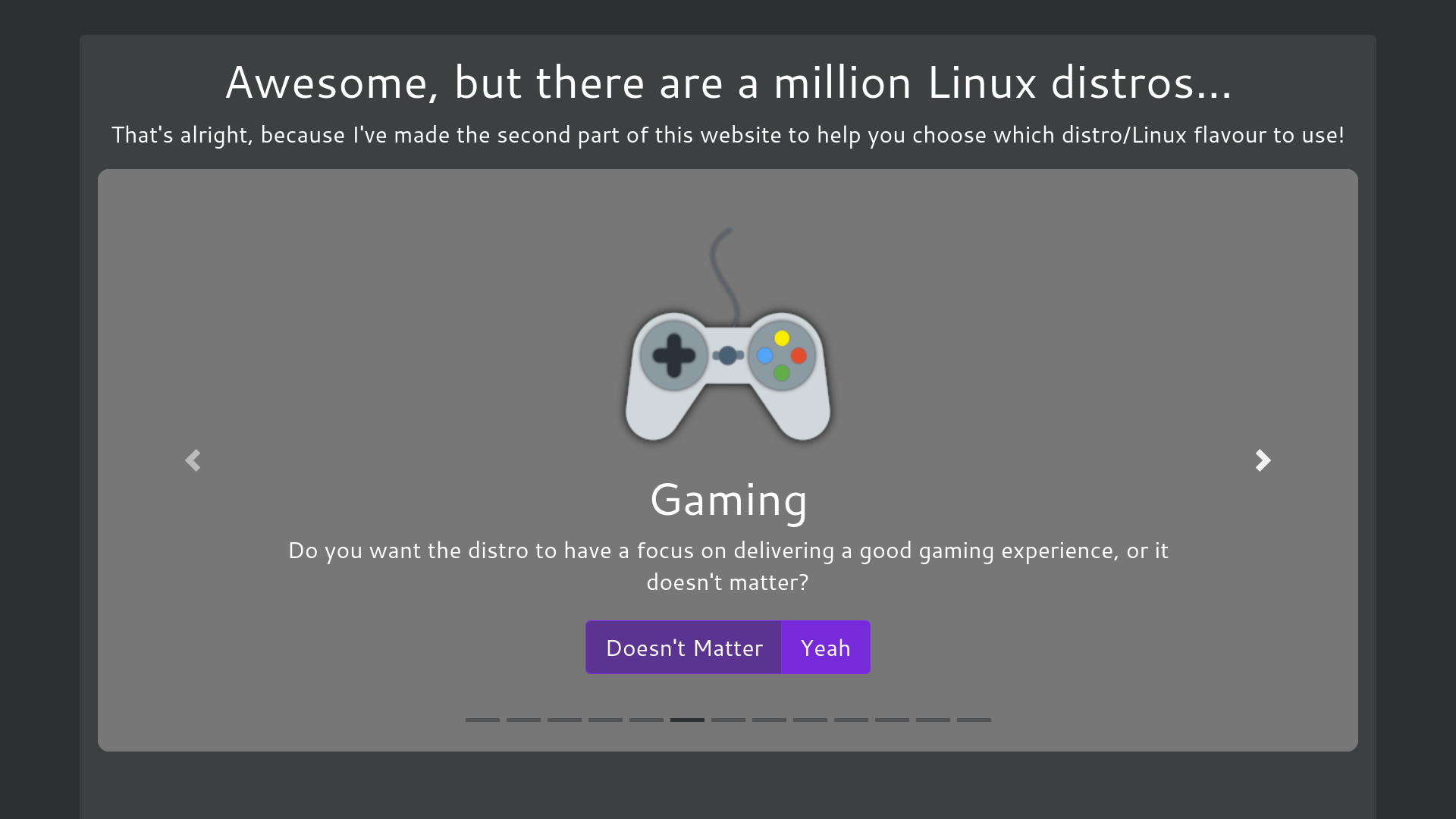
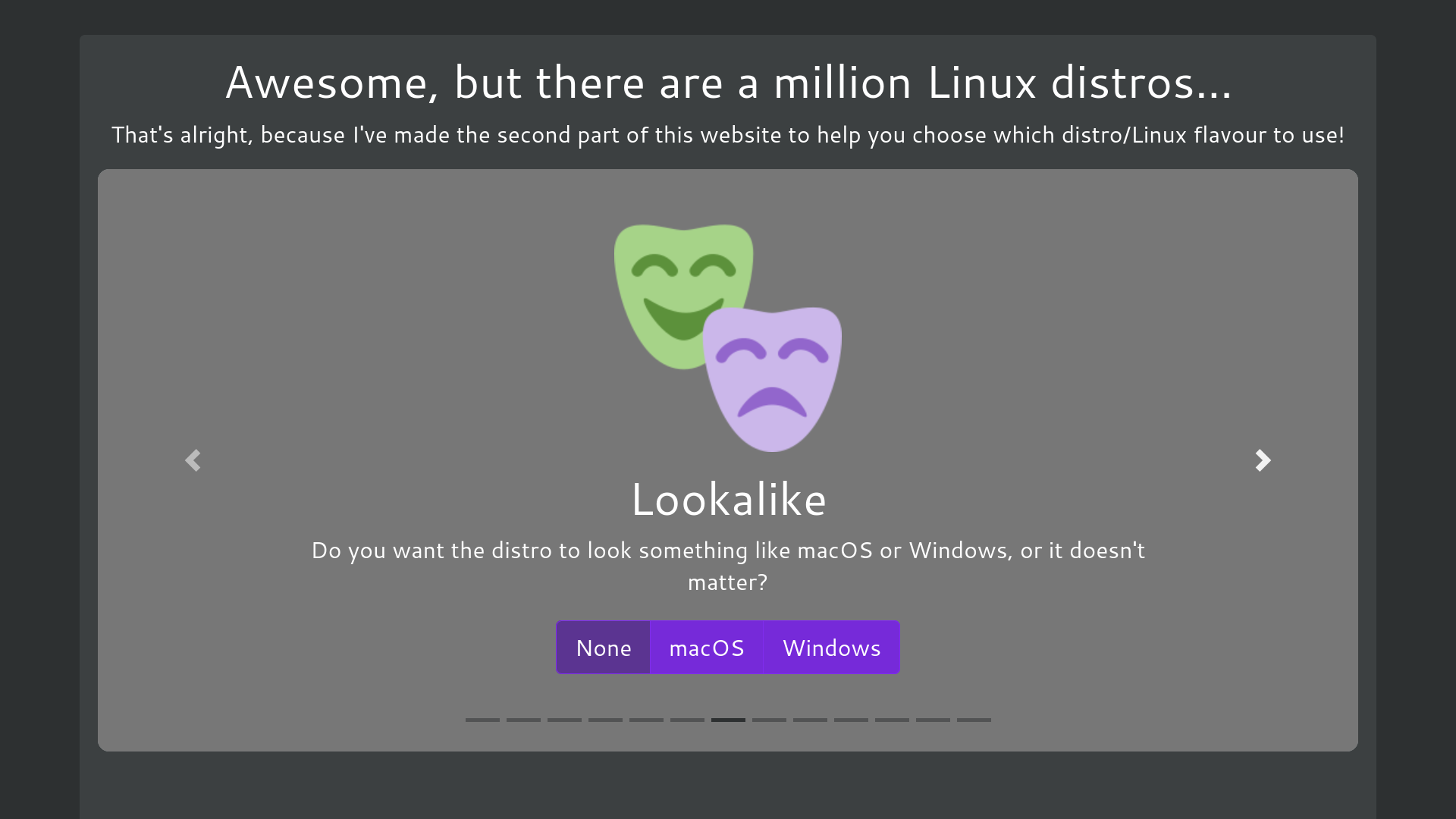
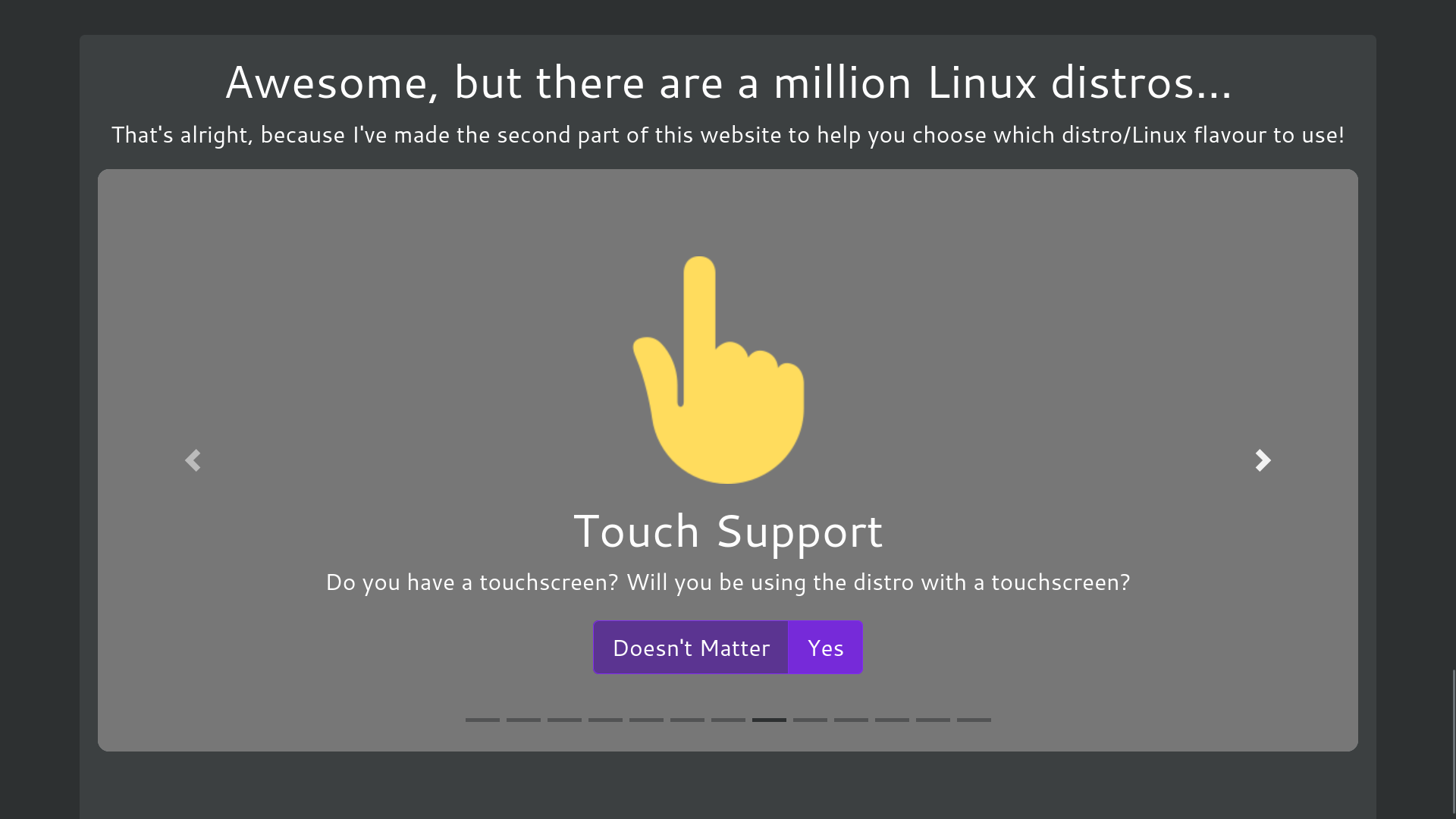
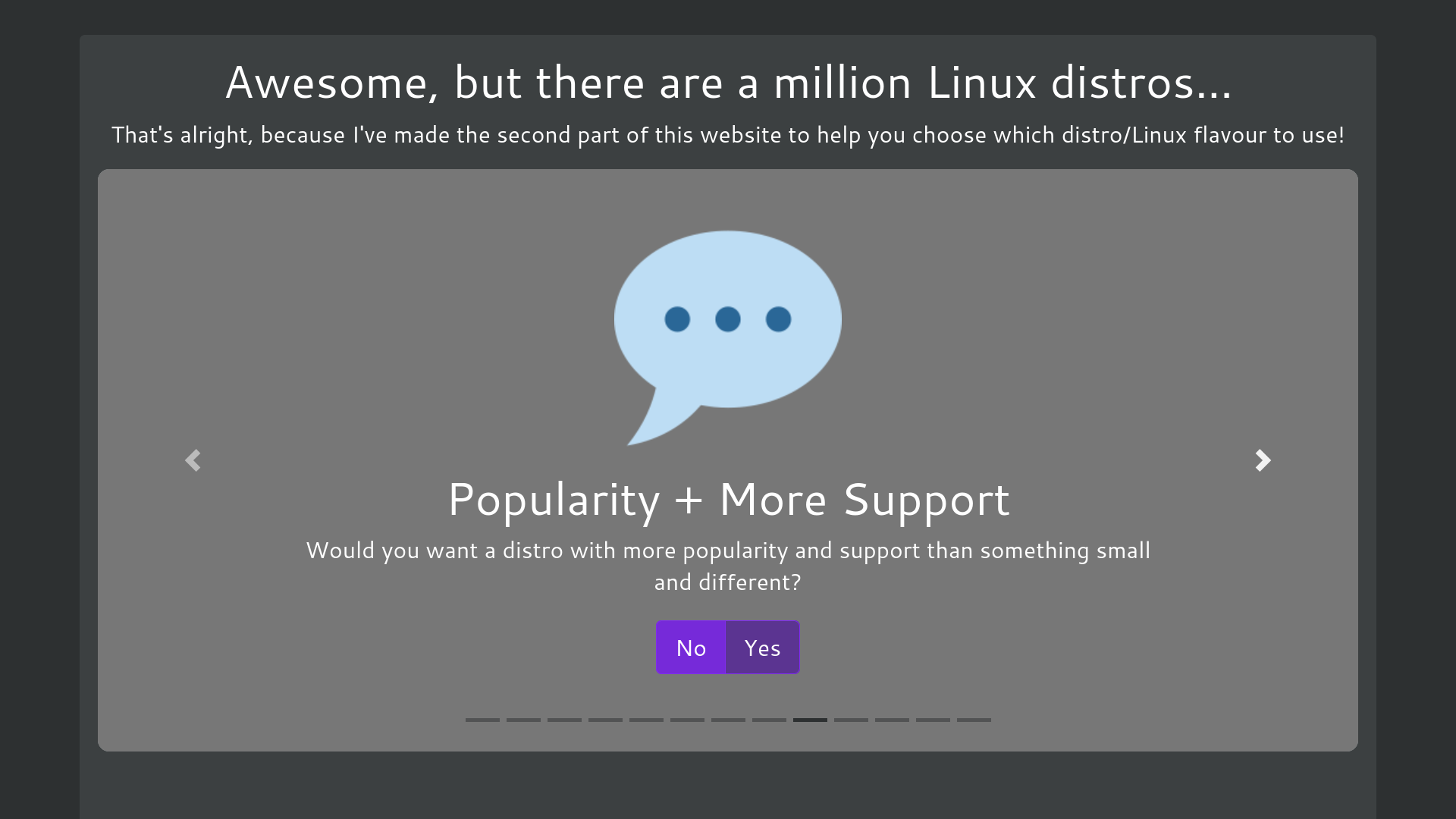
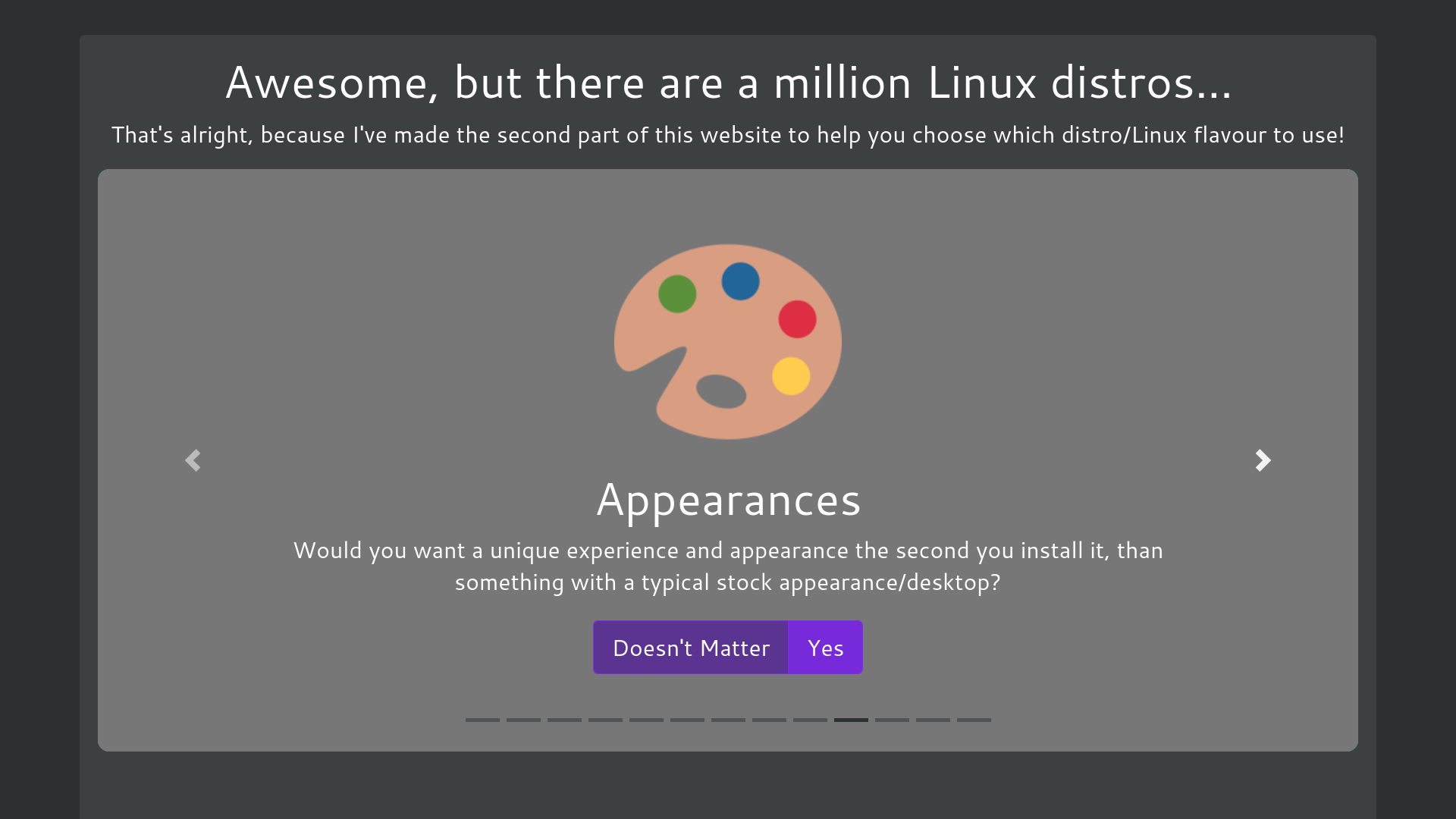
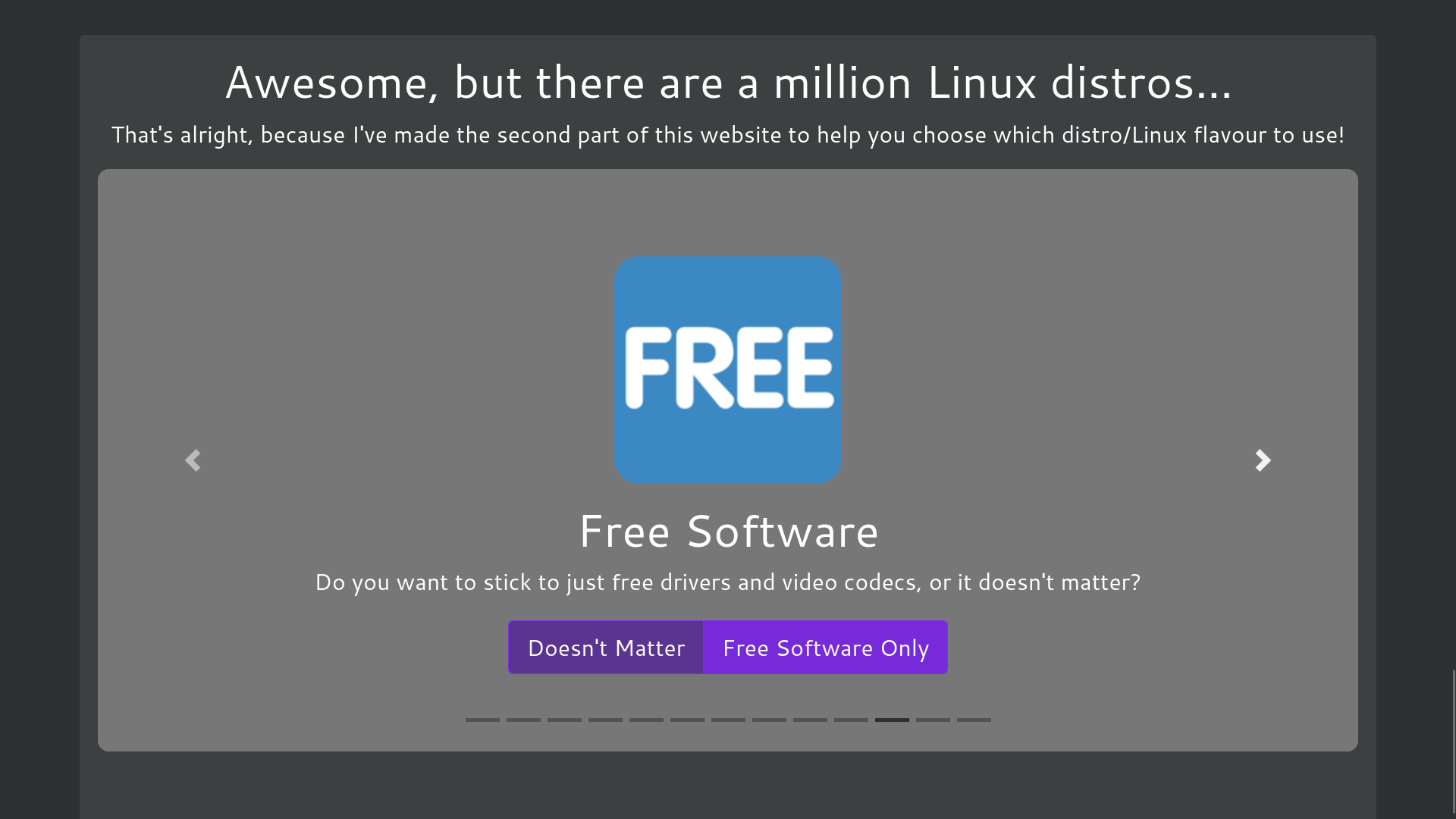
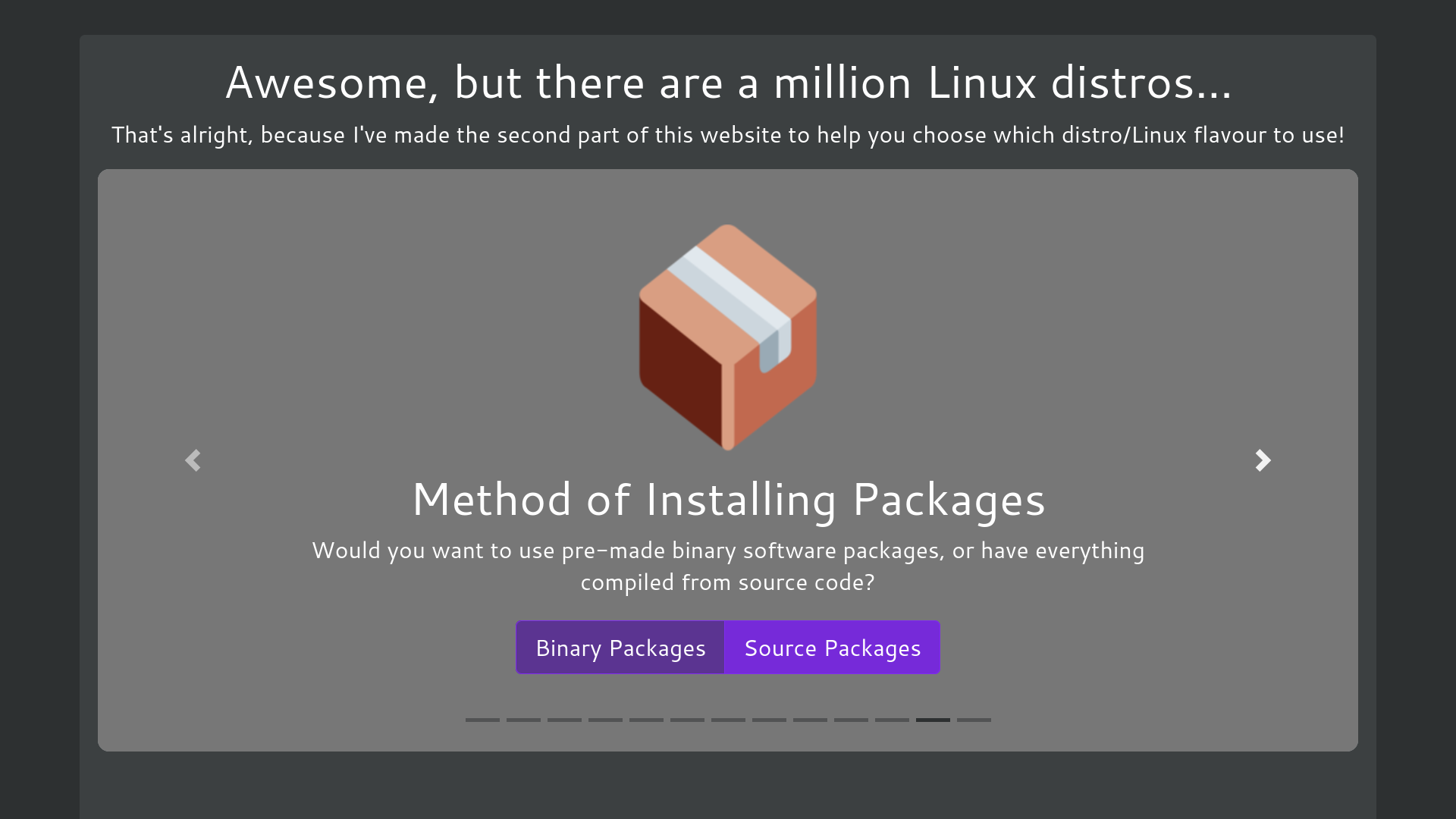
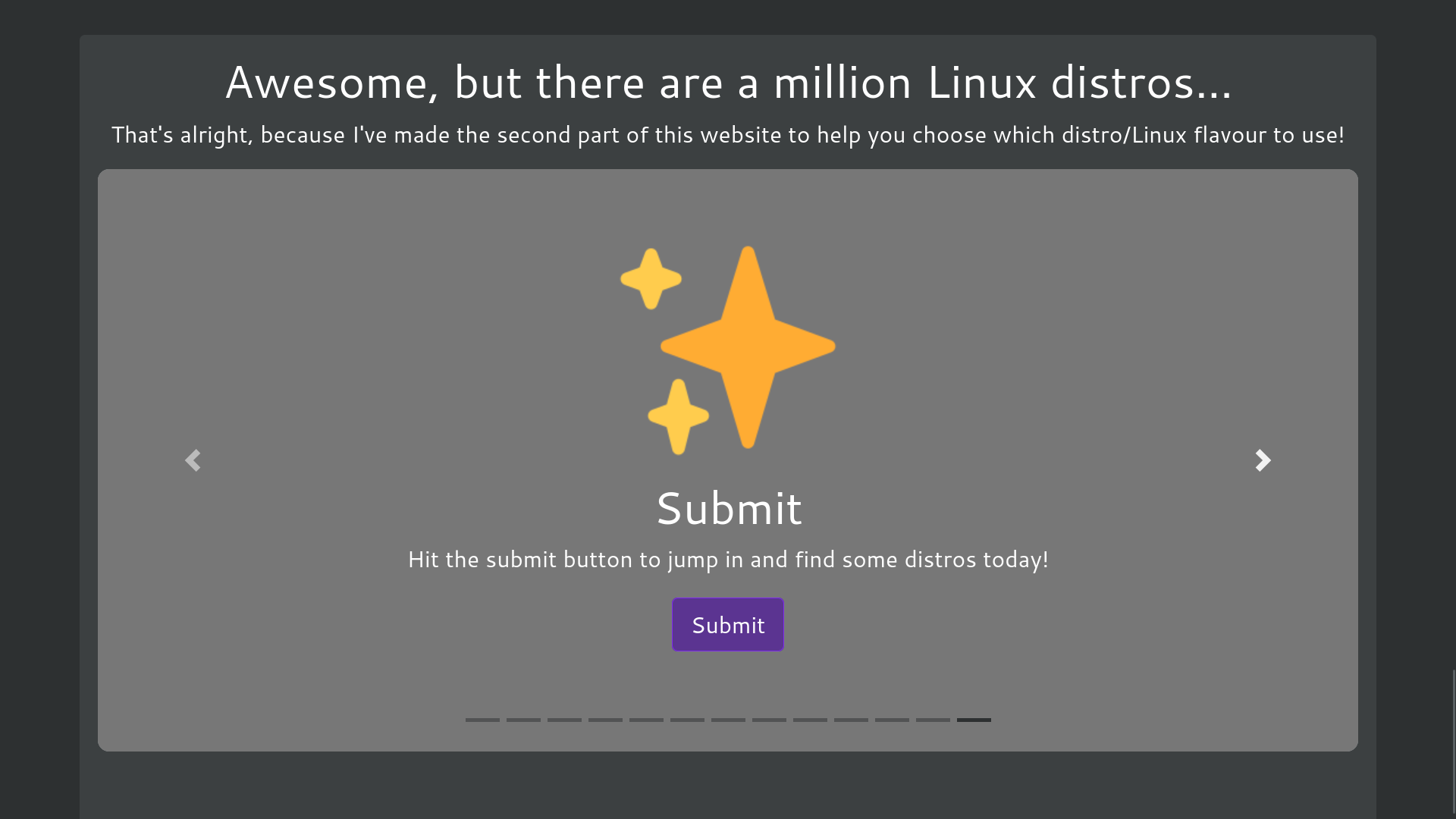
My Experience with LIBREHUNT
After I completed the test, the first three suggestions given to me were Elementary OS, Linux Mint, and Ubuntu. All of them are excellent choices for beginners: Elementary and Mint are both based on Ubuntu, which in turn is based on Debian—definitely great options for new users.
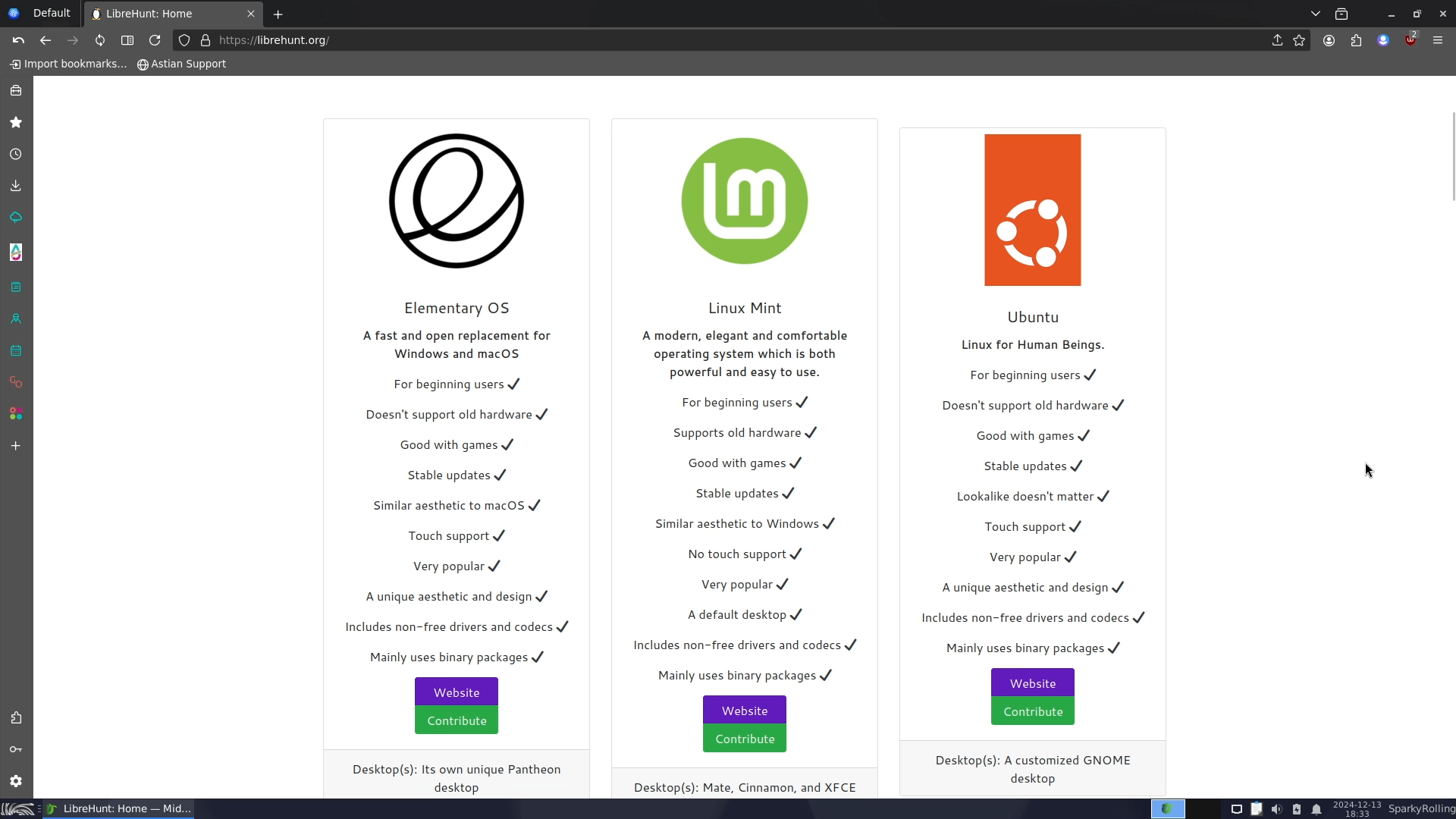
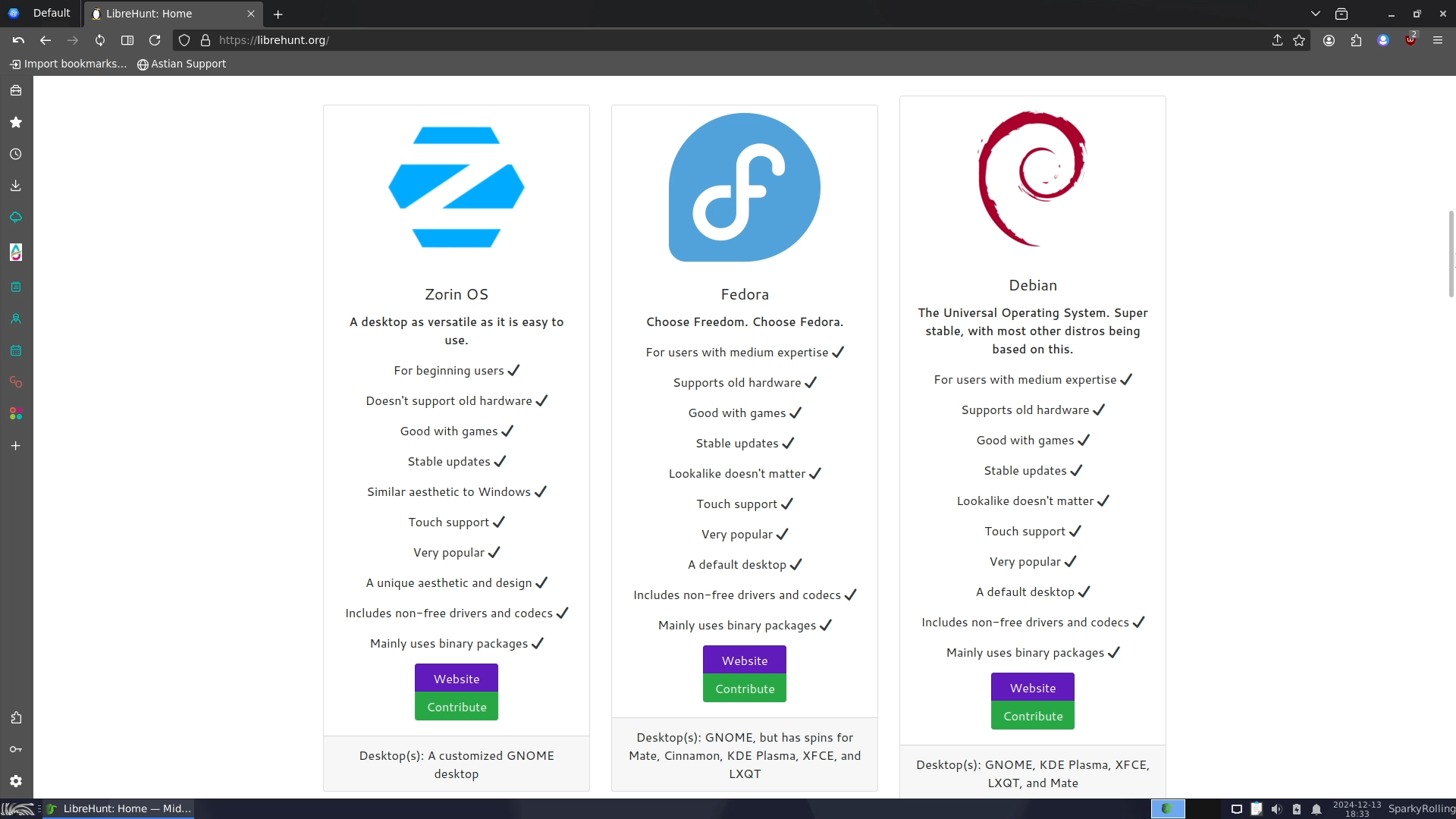
Following these were Zorin OS, Fedora, and Debian in positions four, five, and six, respectively. Zorin is ideal for anyone switching from Windows, while Fedora is the favourite of Linus Torvalds, the creator of the Linux kernel. Debian is my personal favourite distro, and most popular Linux distros trace their roots back to it.
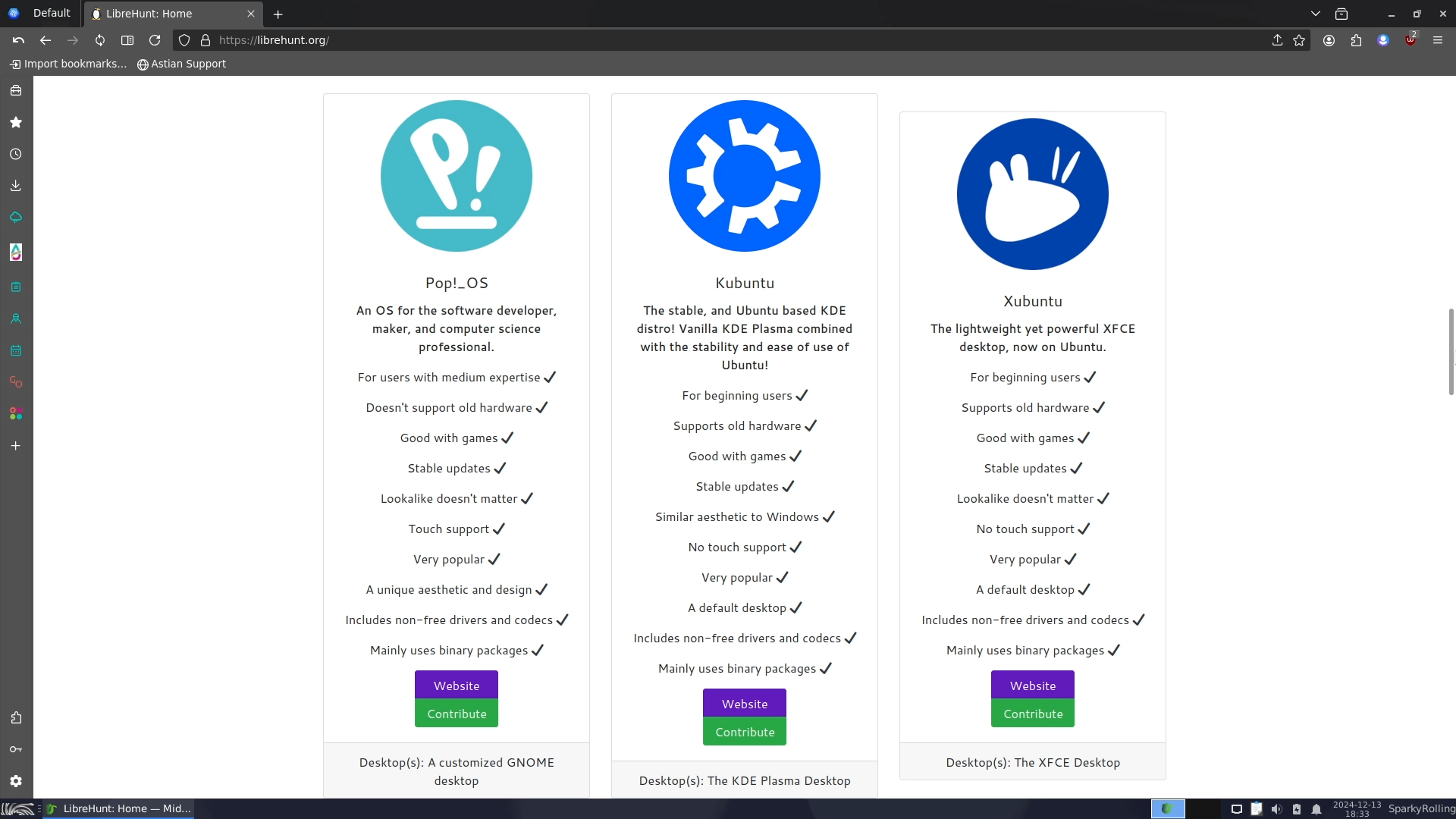
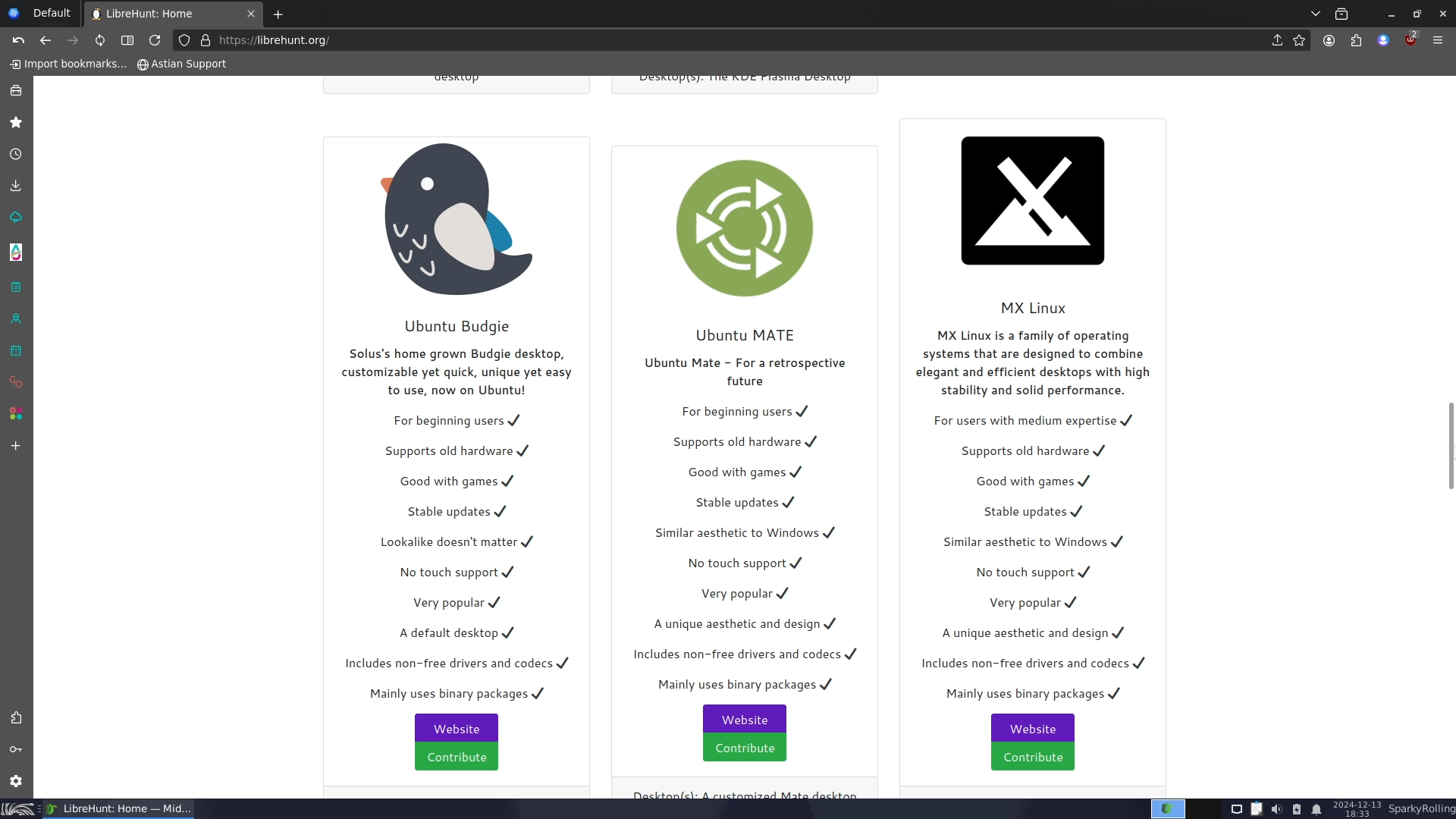
Next on the list were Pop!_OS, Kubuntu, Xubuntu, Ubuntu Budgie, Ubuntu MATE, and MX Linux, all from the Debian-Ubuntu family. Additionally, there was Solus, a very stable independent distro and the creator of the Budgie desktop environment.
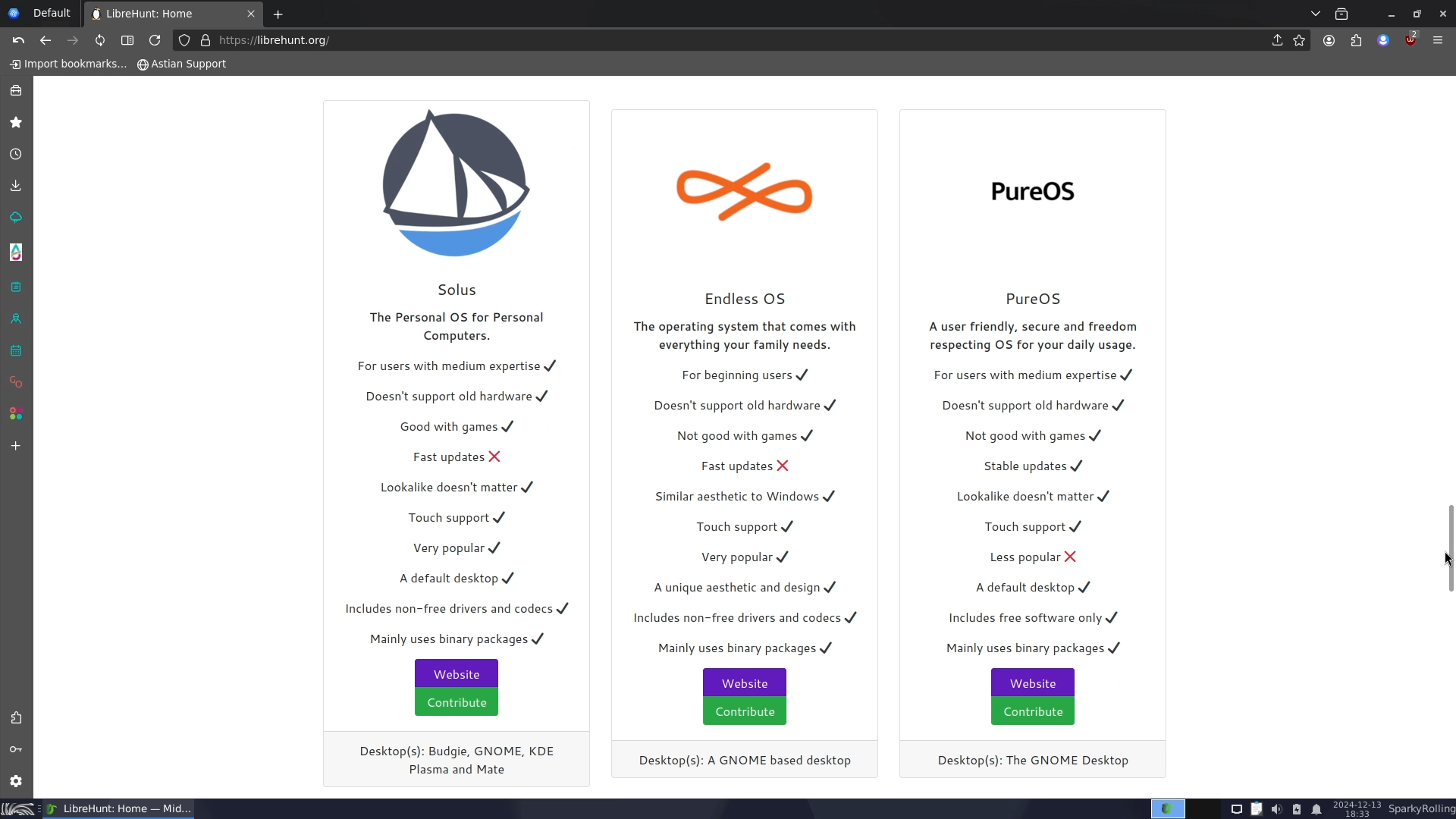
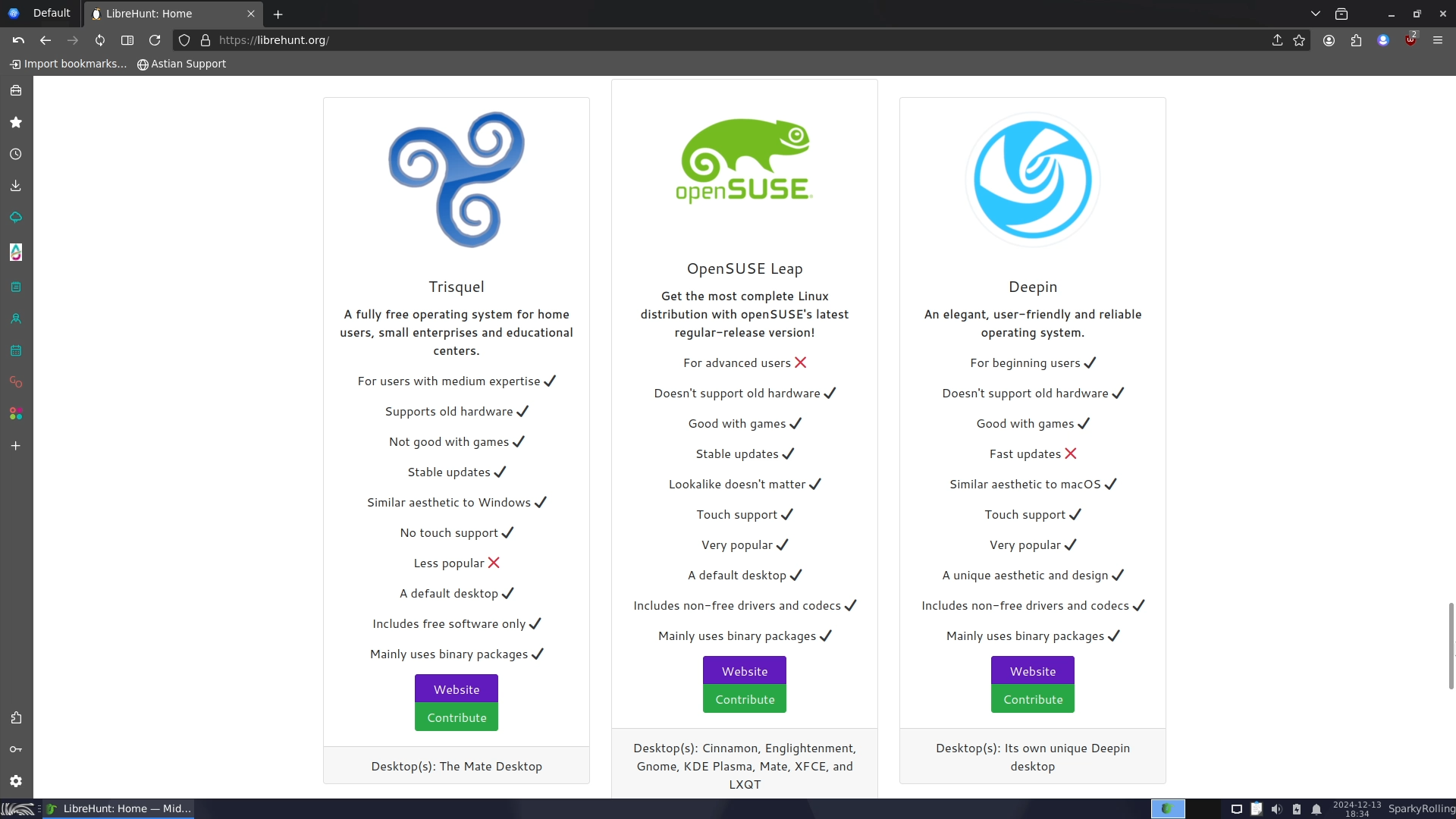
Following these suggestions were Endless OS, an immutable distro, and PureOS and Trisquel, which are both pure GNU/Linux distros. Then, there was OpenSUSE Leap, another great distro, though it may not be ideal for beginners, and Deepin, which is visually appealing but is heavy on system resources and originates from China, so it’s not recommended for everyone.
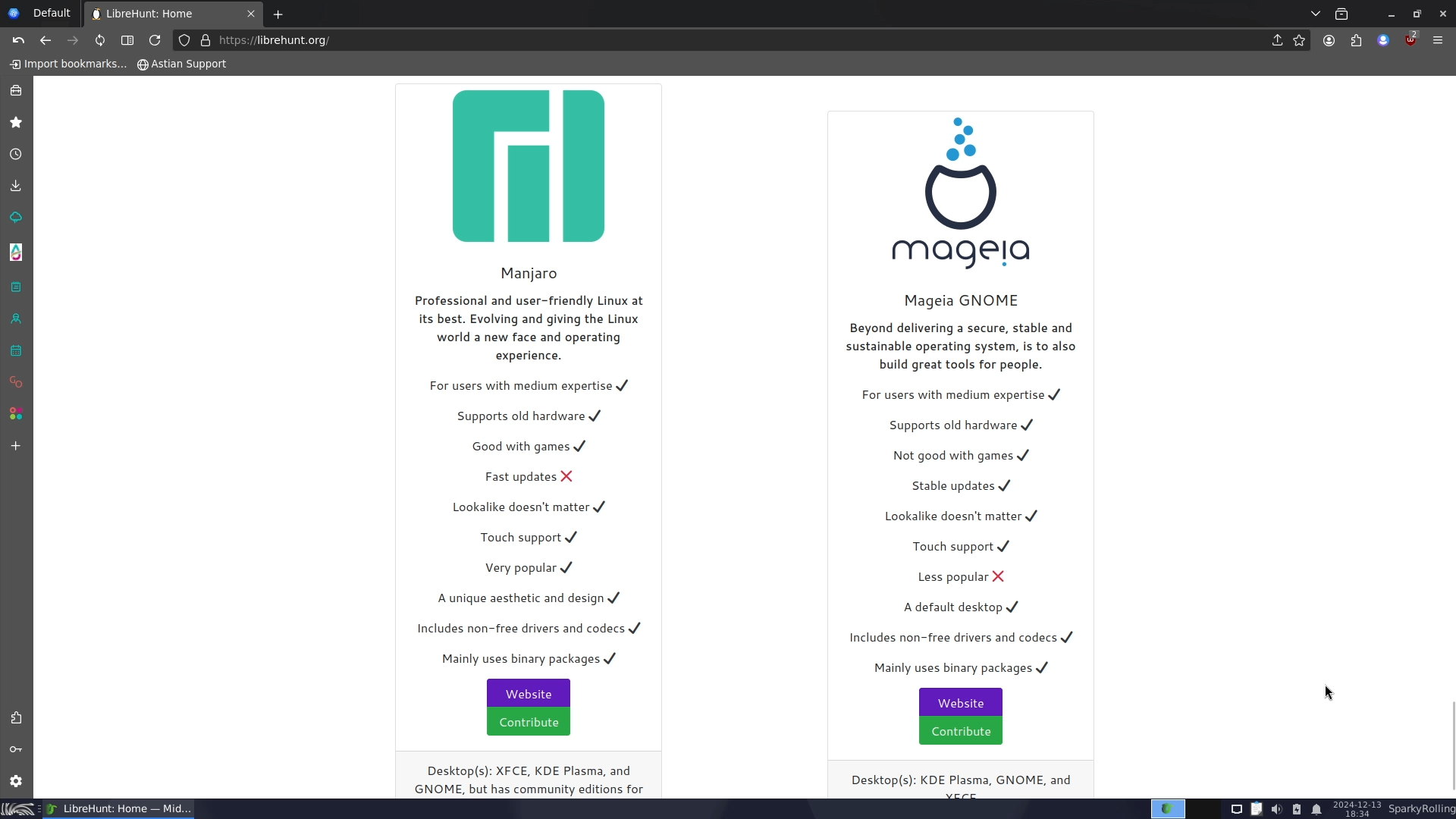
Finally, Manjaro, a beginner-friendly distro from the Arch branch, and Mageia Gnome rounded out the list.
Without a doubt, LIBREHUNT.ORG suggested great options for any Linux user. I highly recommend the first 12 options to any beginner, as they are excellent starting points.
Now, let’s move on to our second website, DISTROCHOOSER.DE.
DISTROCHOOSER was created by German programmer Christoph Müller, and as the name suggests, its goal is similar to LIBREHUNT’s. However, DISTROCHOOSER takes a more refined approach to finding your ideal Linux distro by drilling down into more detail and allowing for multiple answers.
DISTROCHOOSER Walk-Through
The DISTROCHOOSER homepage is very simple. There is a menu on the left side that leads to the question section. In total, there are 13 questions covering topics such as use case, computer knowledge, Linux knowledge, OS installation presets, hardware and software support, user experience, price, and privacy.
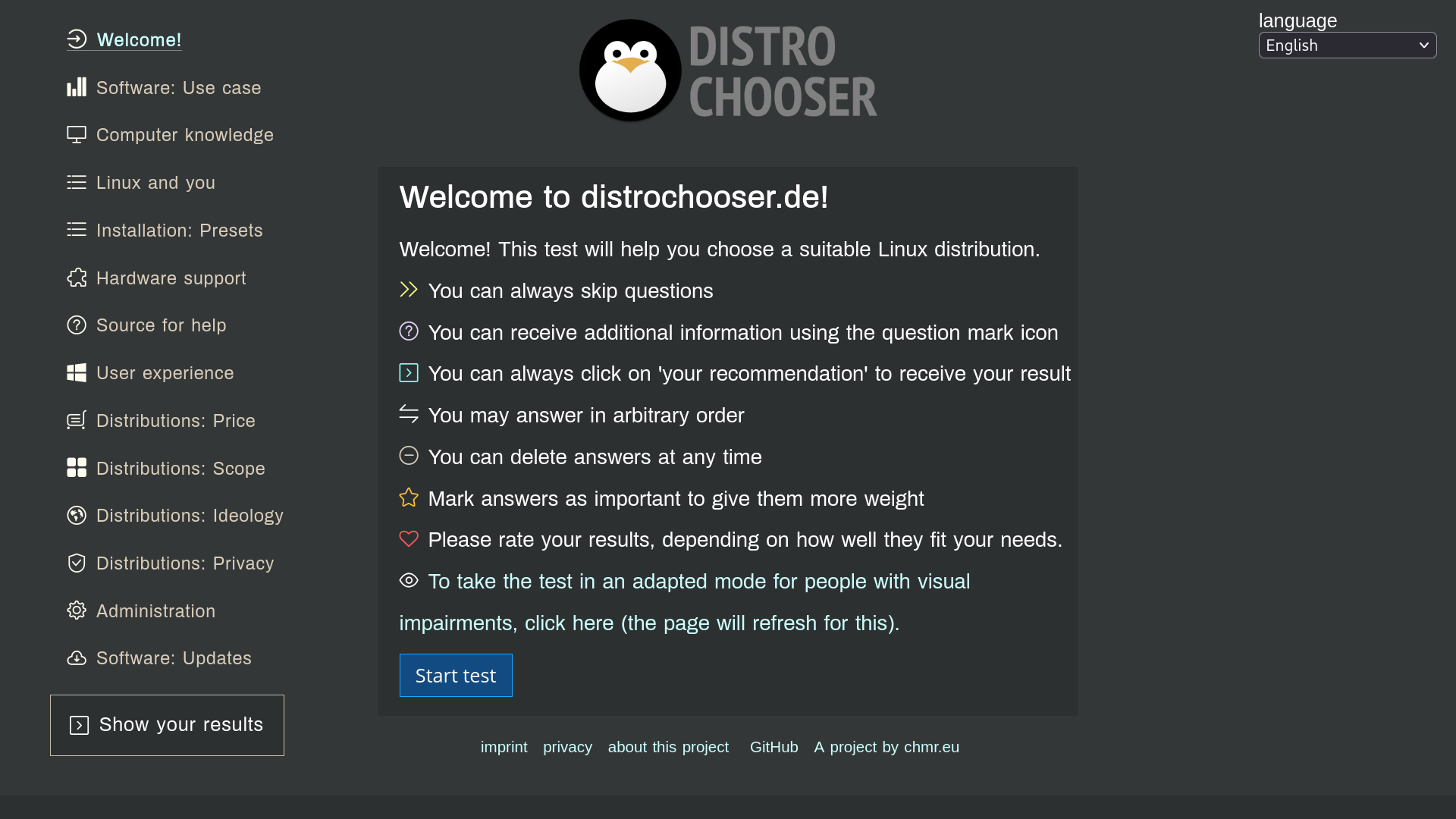
In the middle section, you will find instructions stating that: - You can skip questions at any time. - You can change or delete your answers whenever you wish. - You can receive additional information by clicking on the question mark icon. - You can mark answers to give them more weight or importance. - You can click on ‘Show your results’ to finish the test and receive your personalised recommendations.
Screenshots of DISTROCHOOSER Test
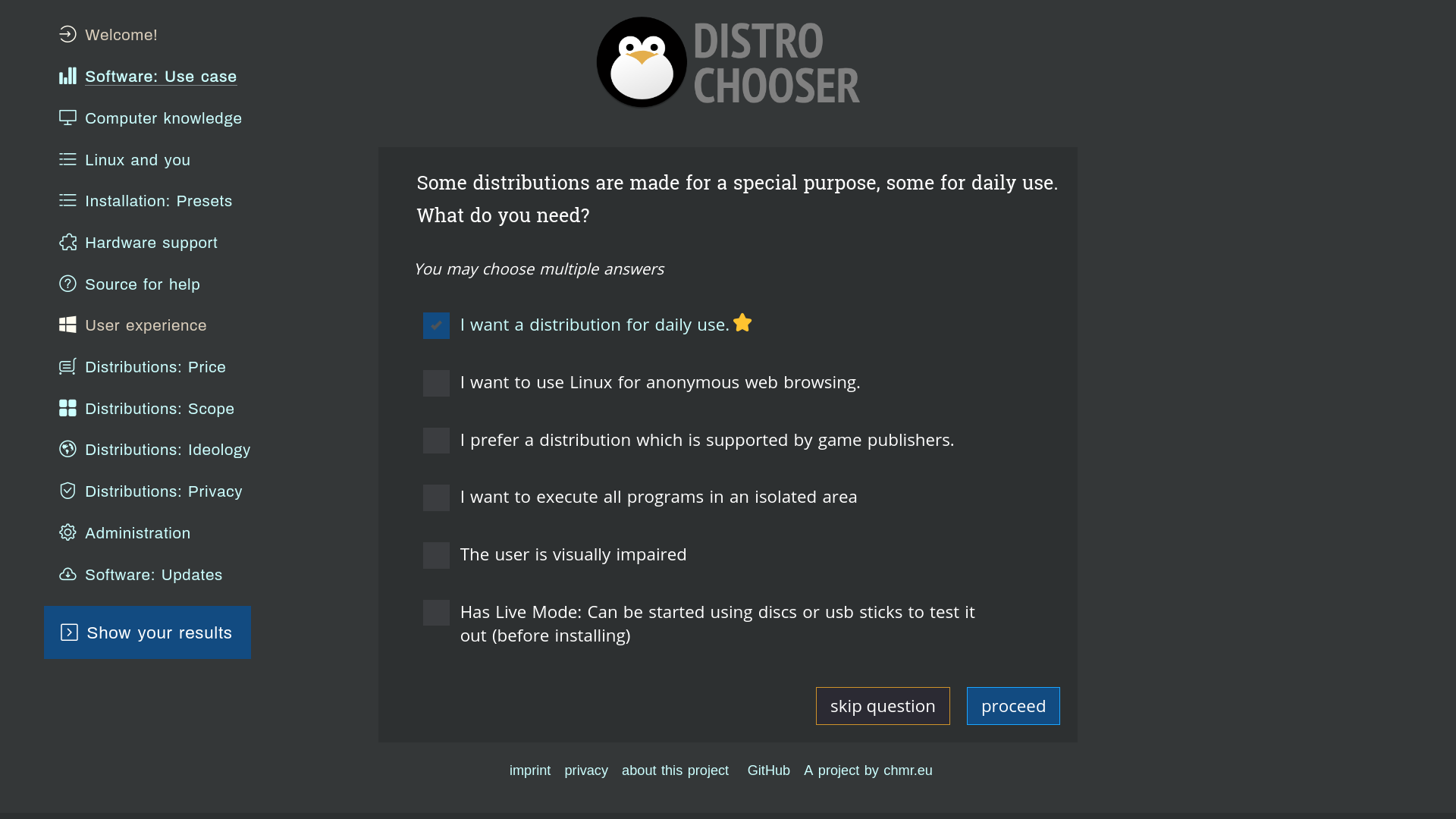
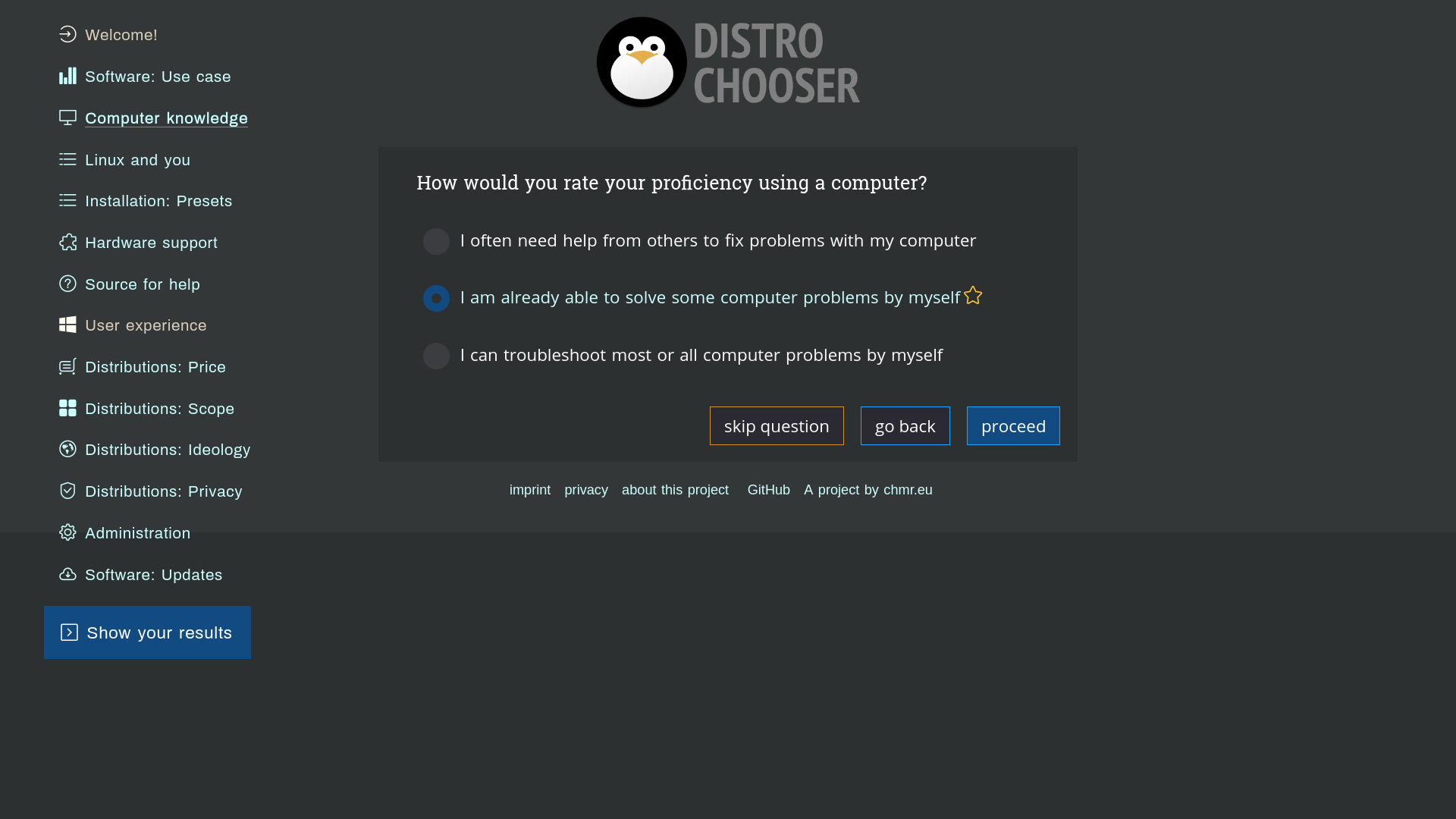
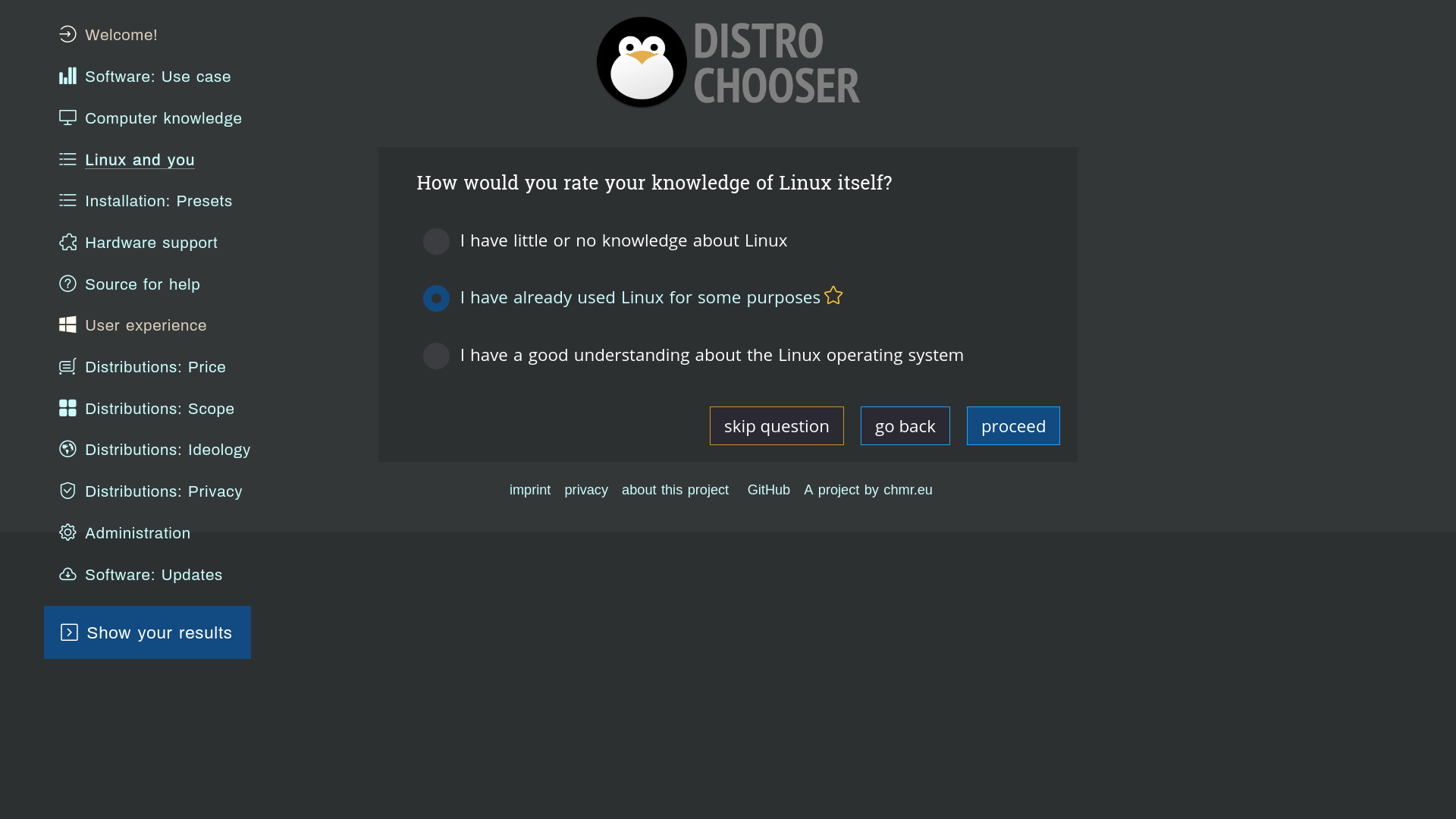
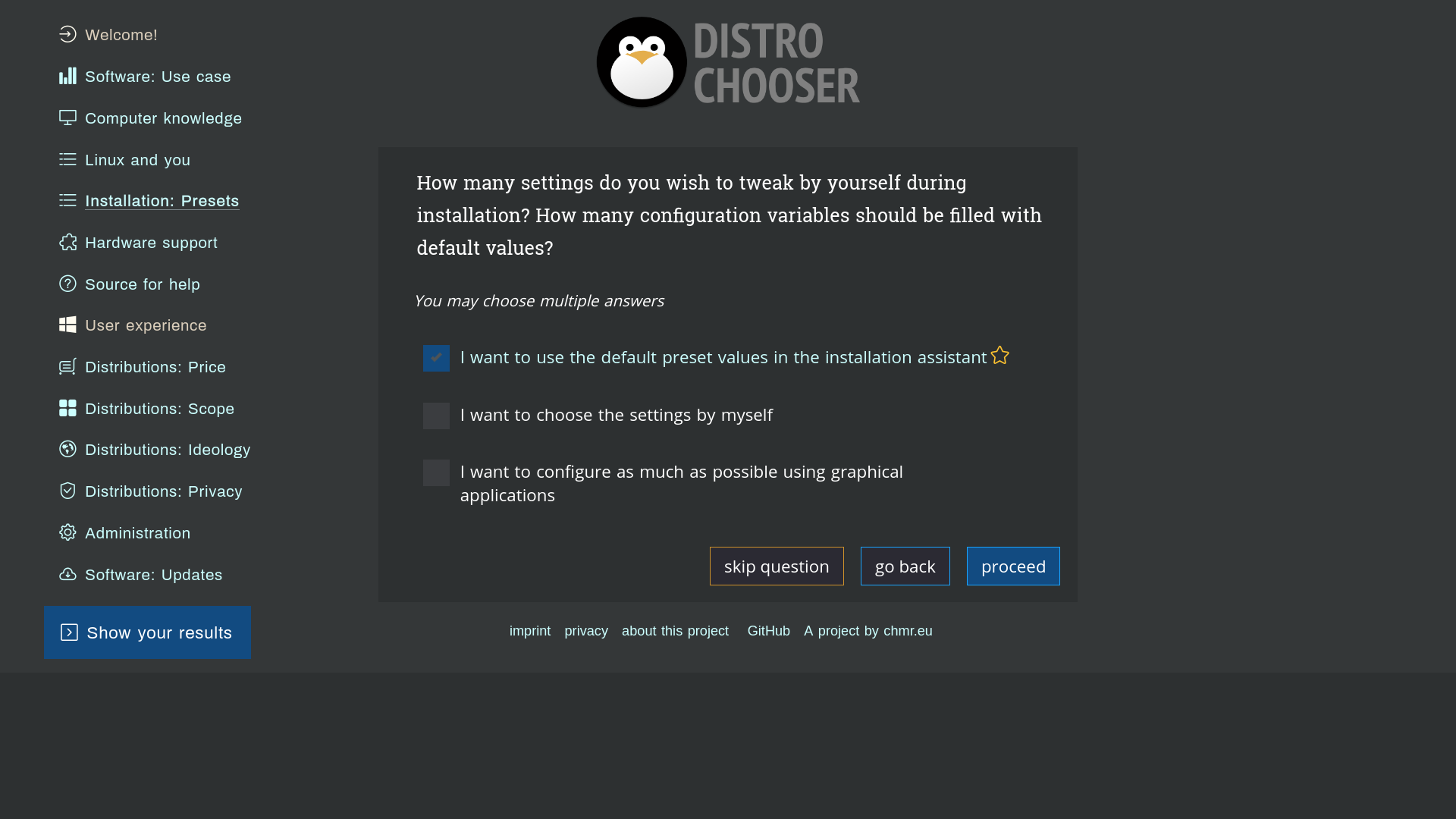
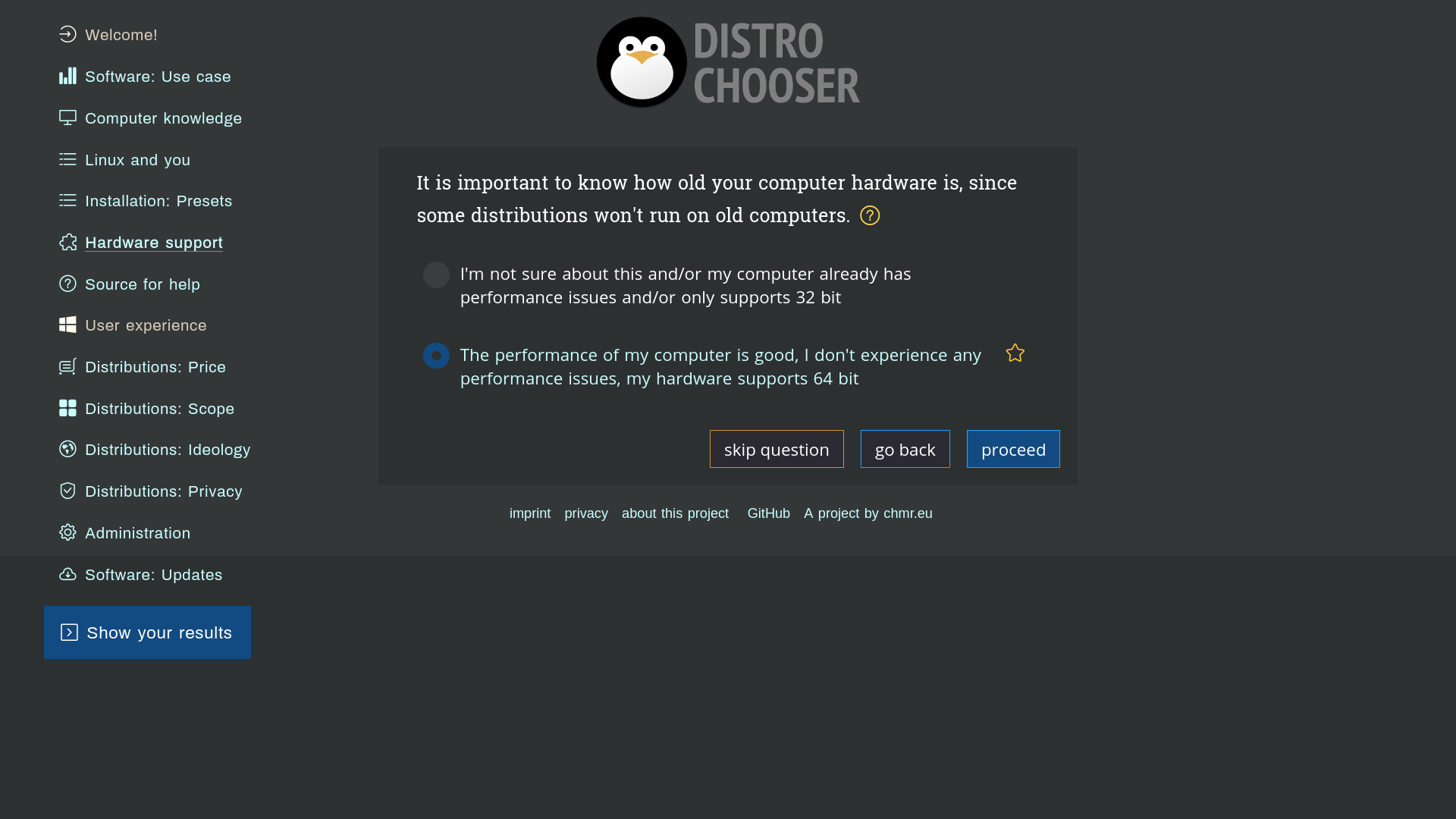
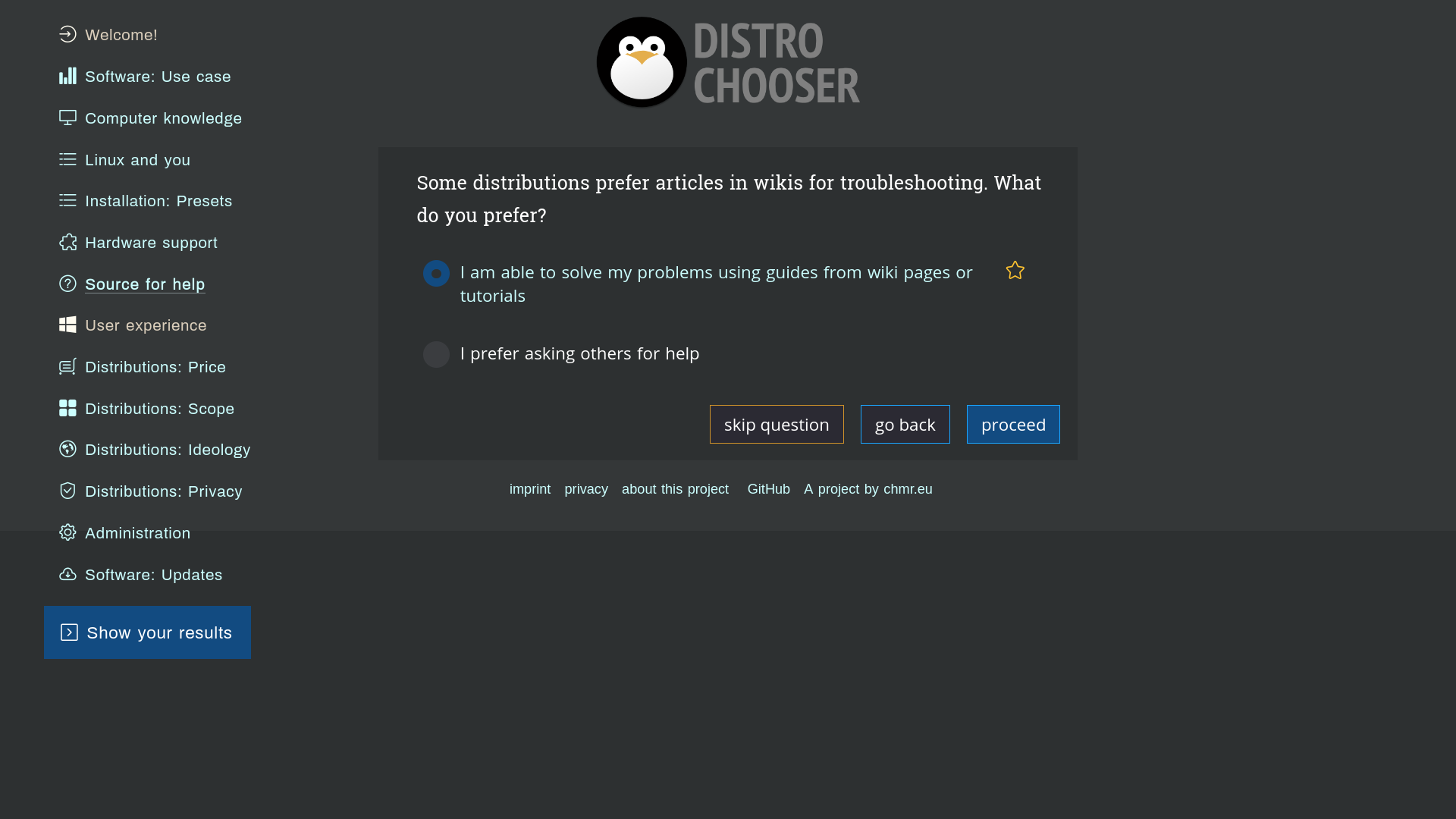
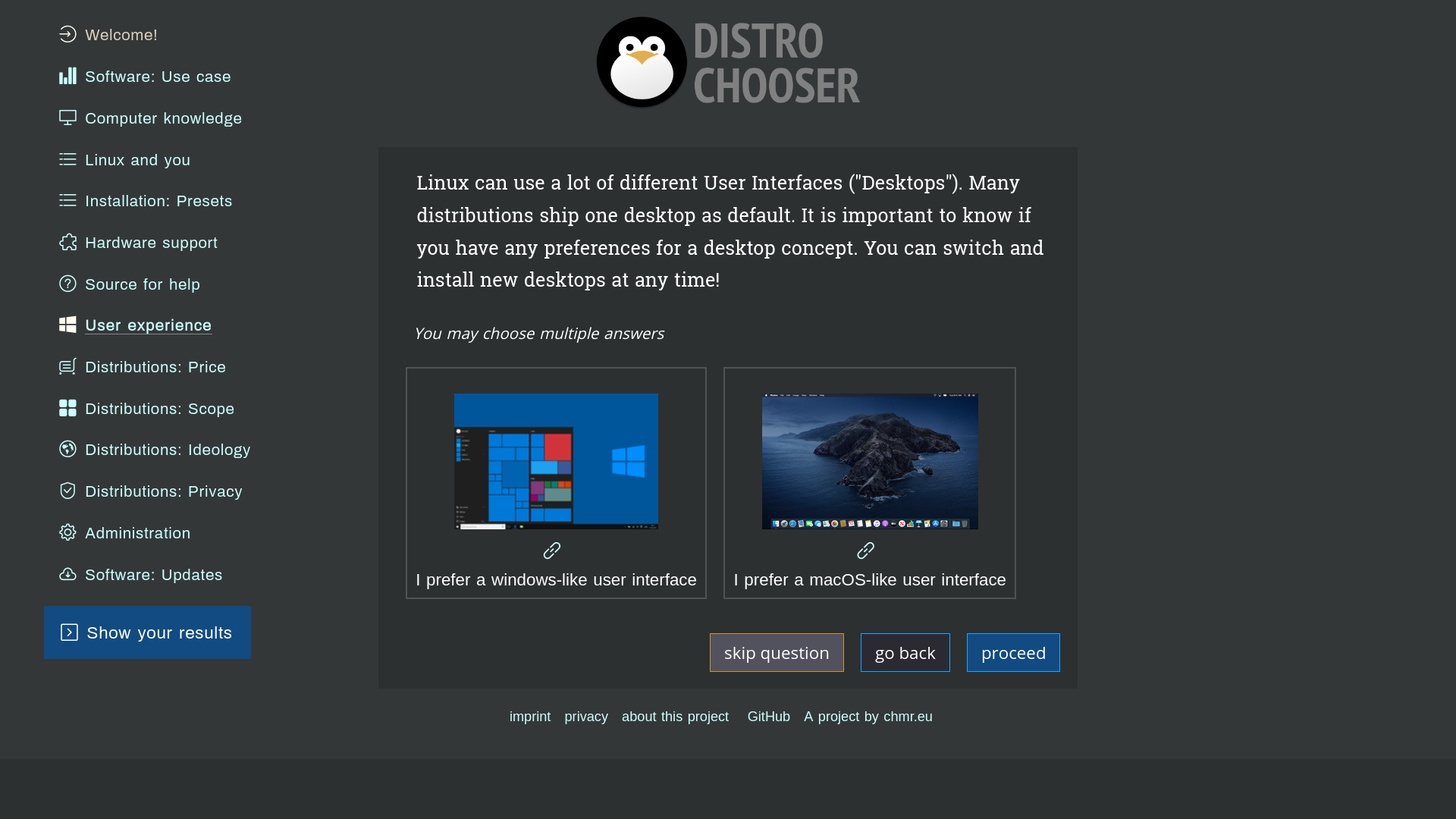
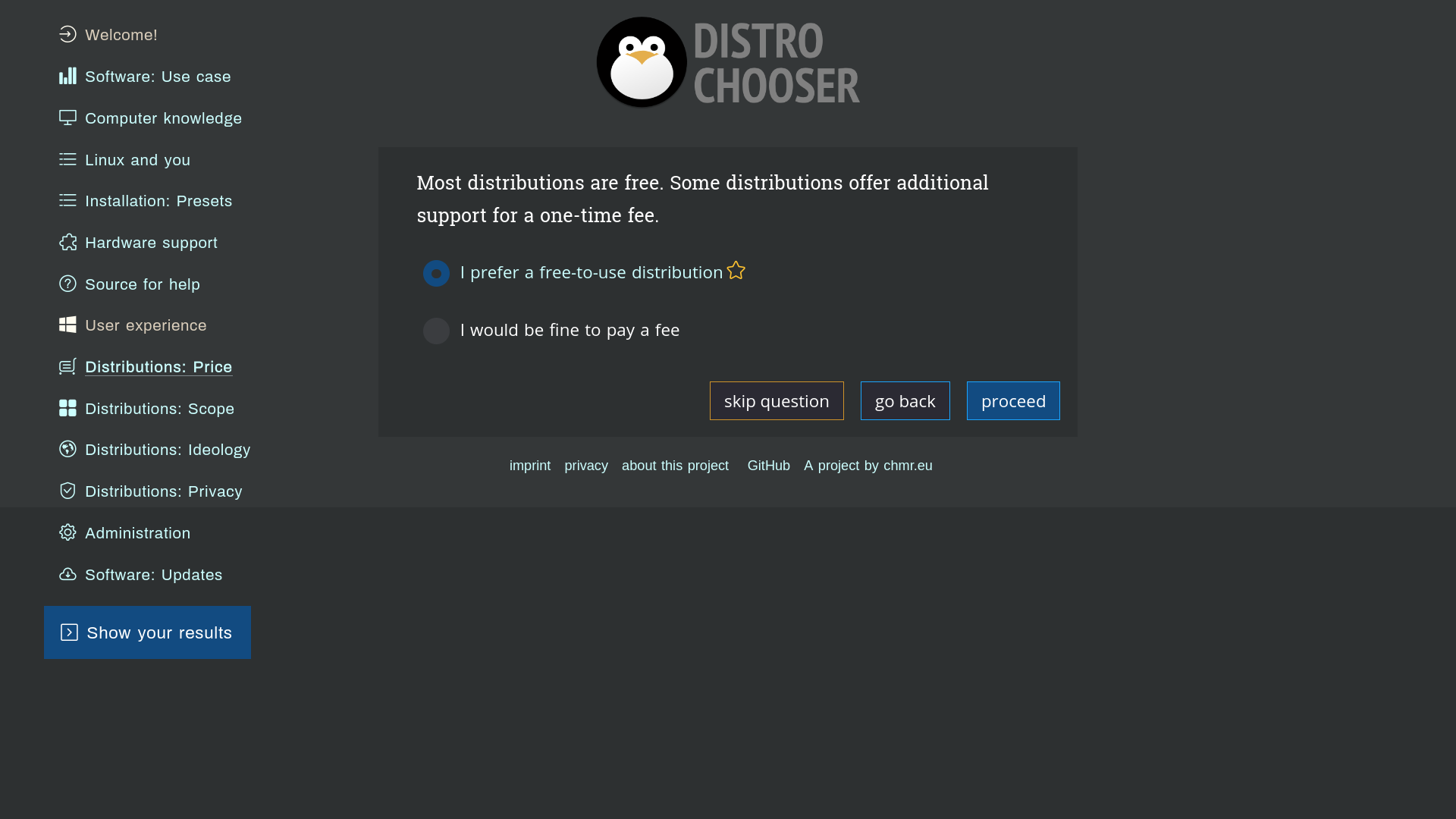
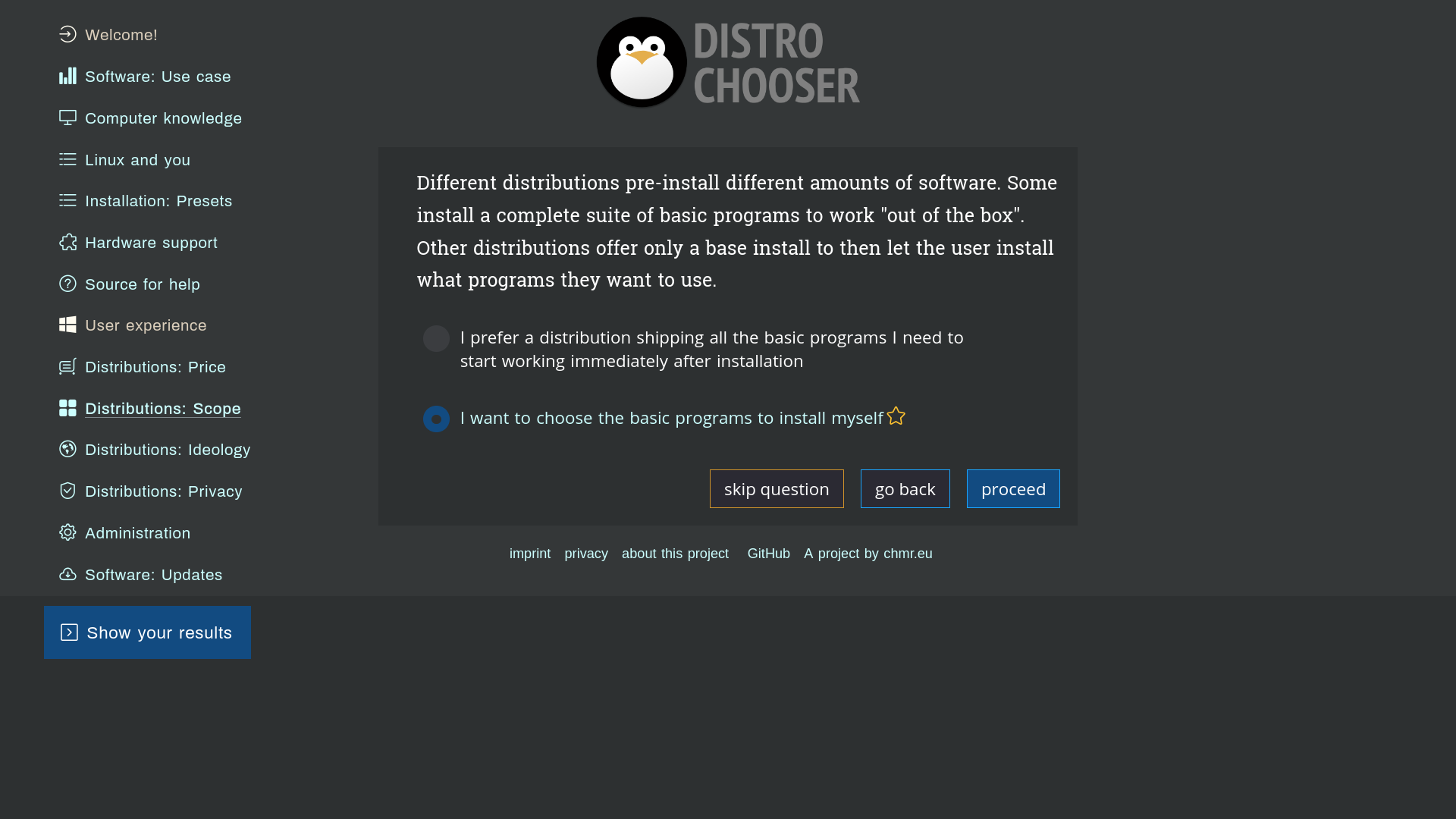
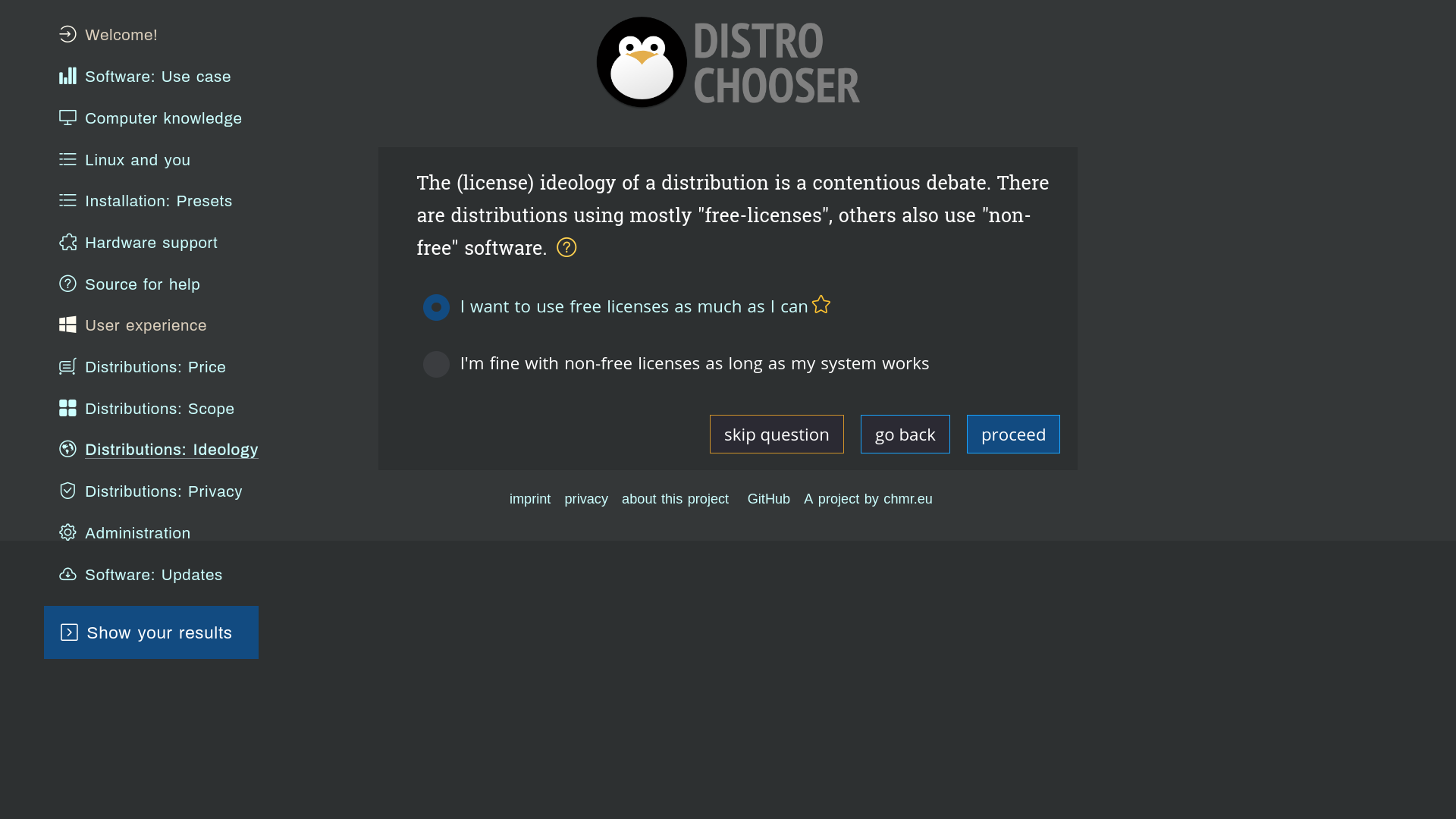
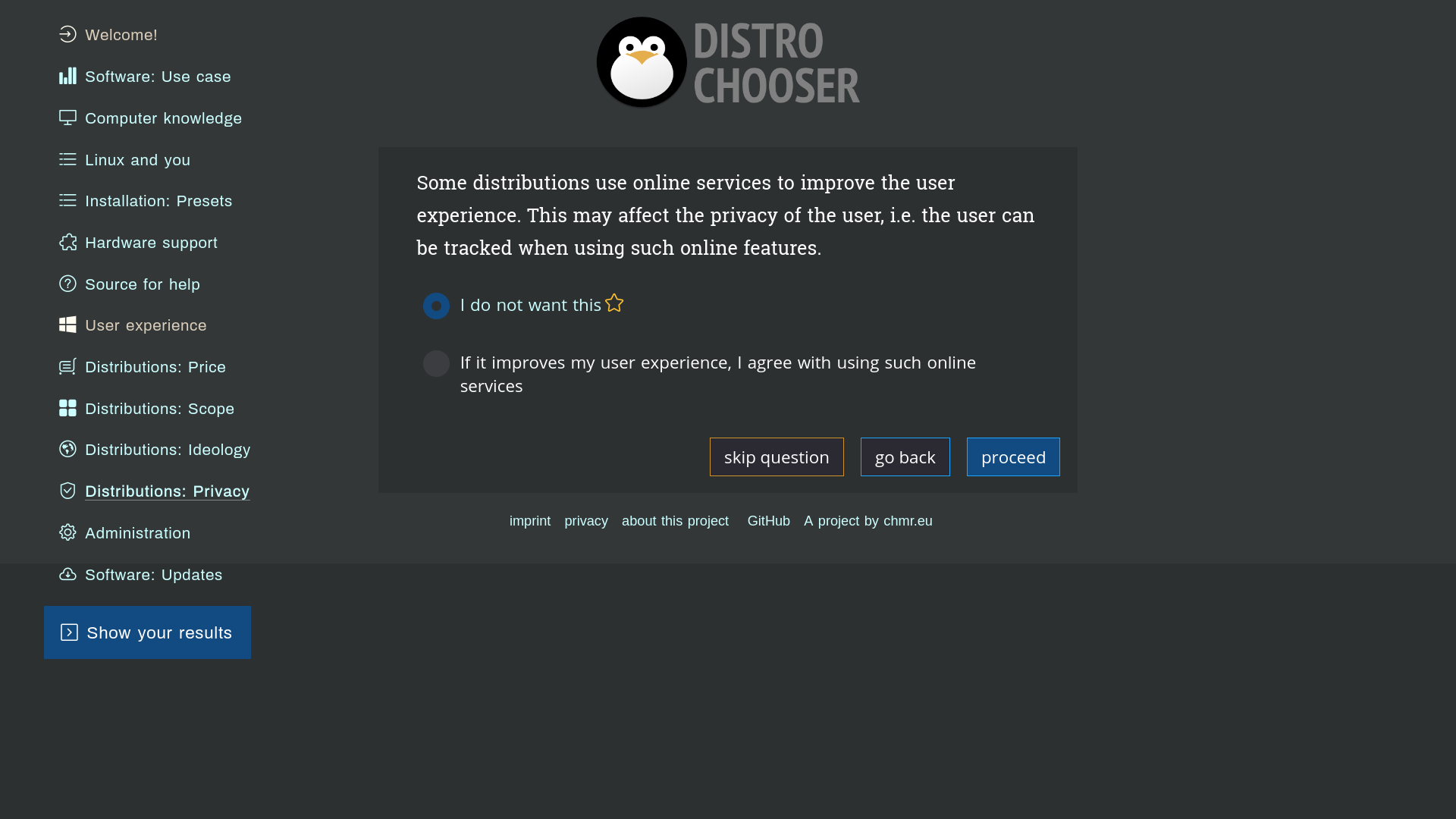
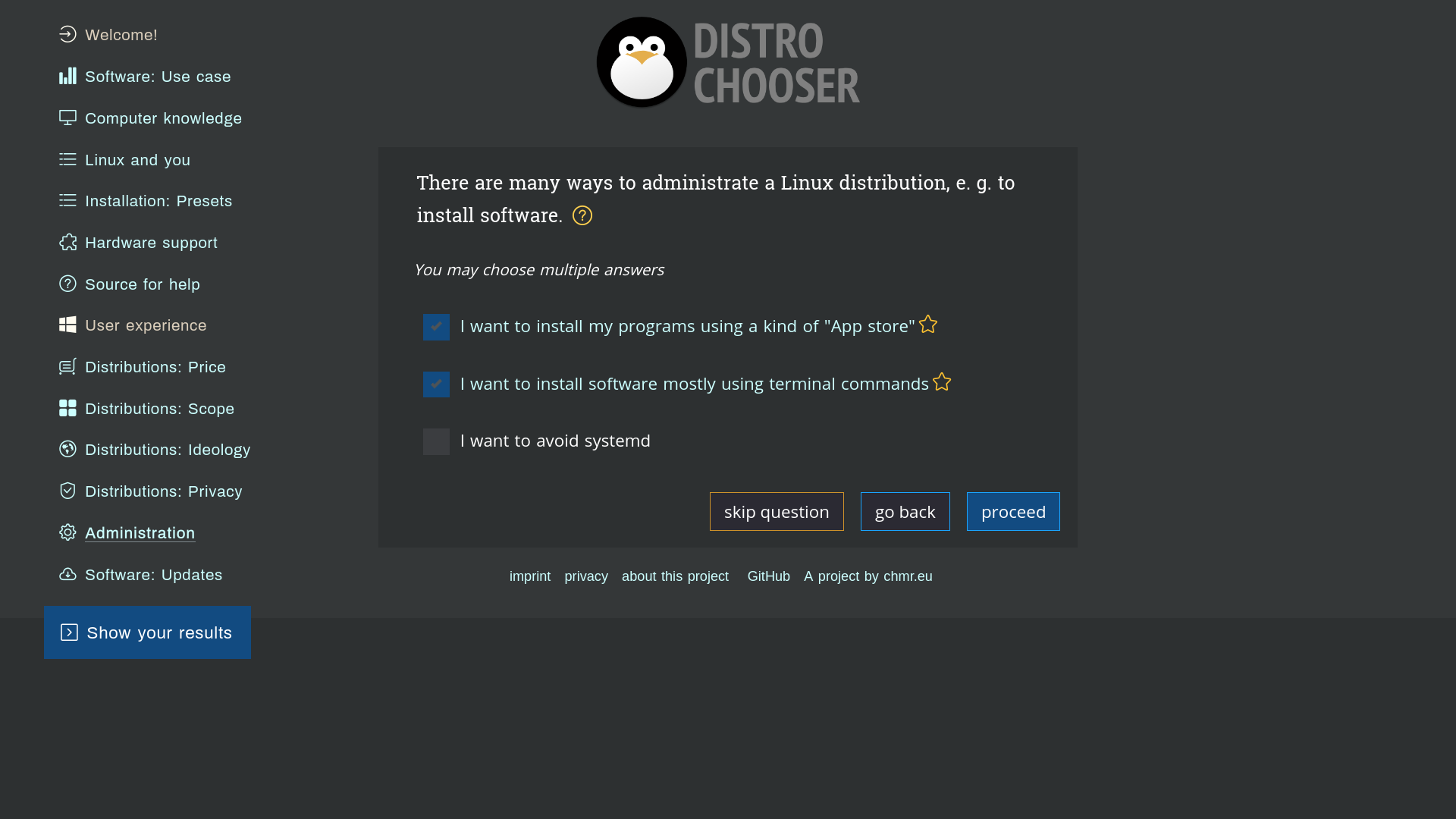
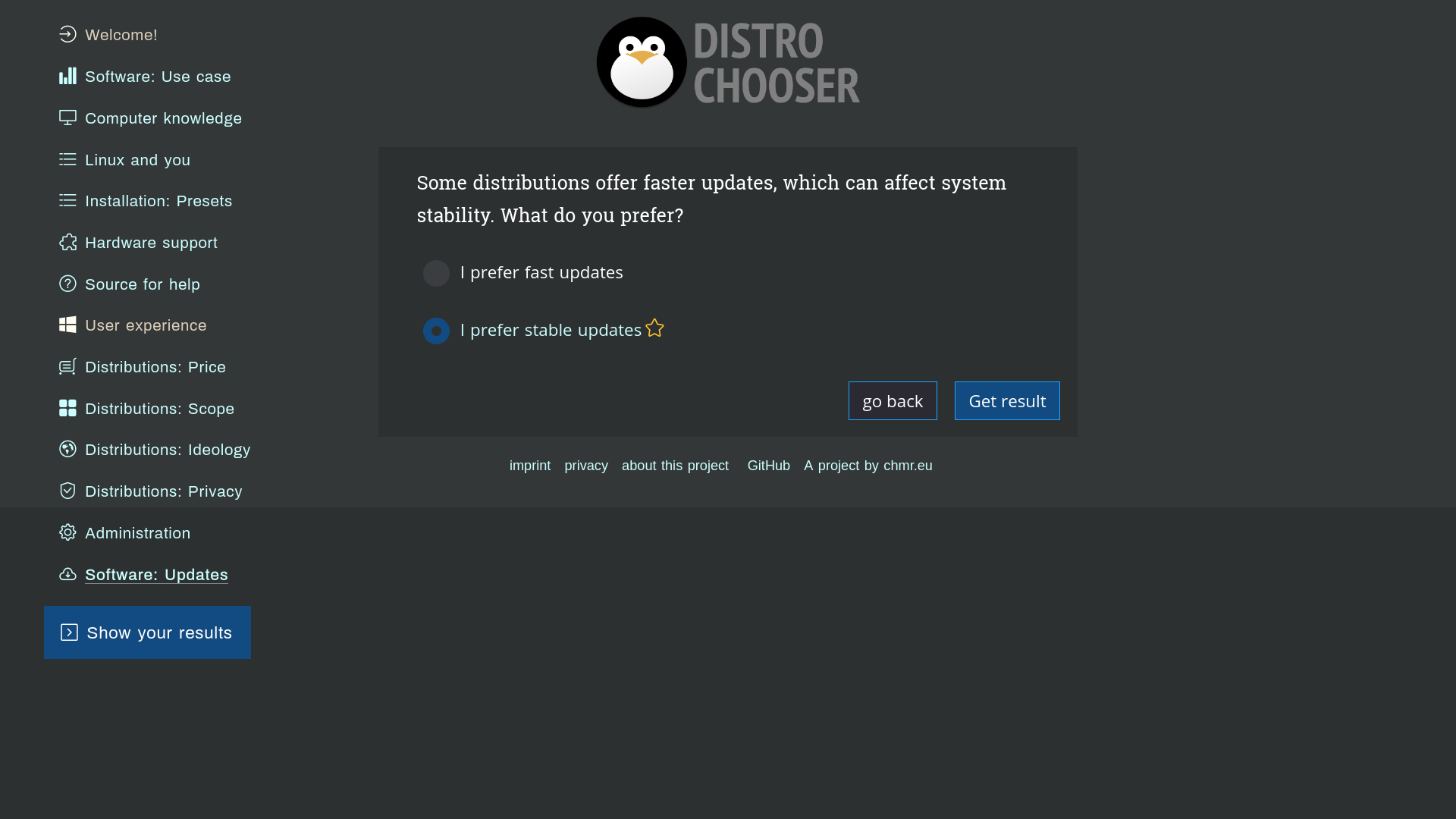
My Experience with DISTROCHOOSER
Upon completing the test, the first result I received was Debian. Next was Devuan, which is essentially Debian without SystemD. In third and fourth place, I was recommended Rocky Linux, based on Red Hat (or you could say Fedora), and then OpenSUSE—both great distros, though not recommended for beginners.
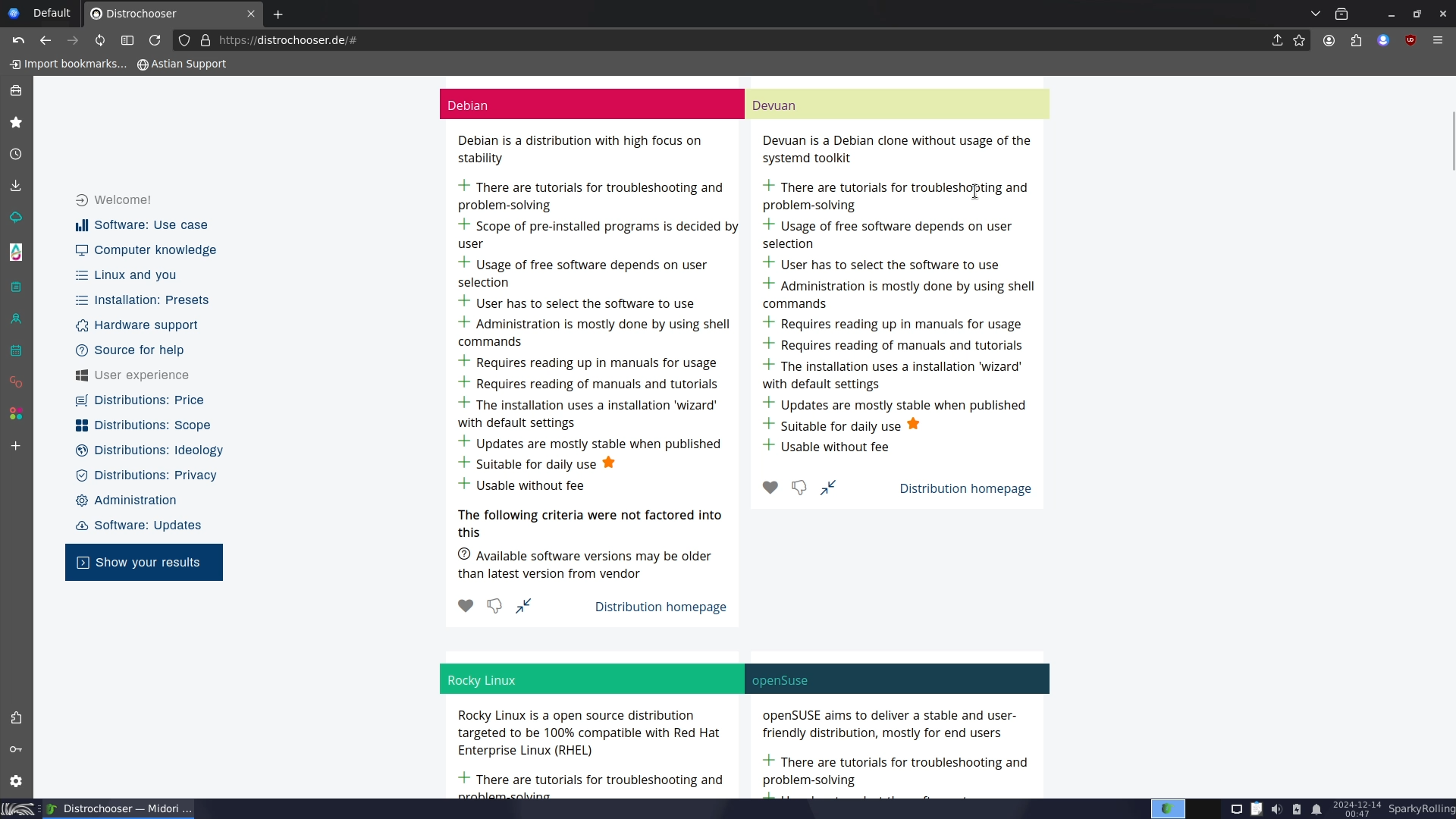
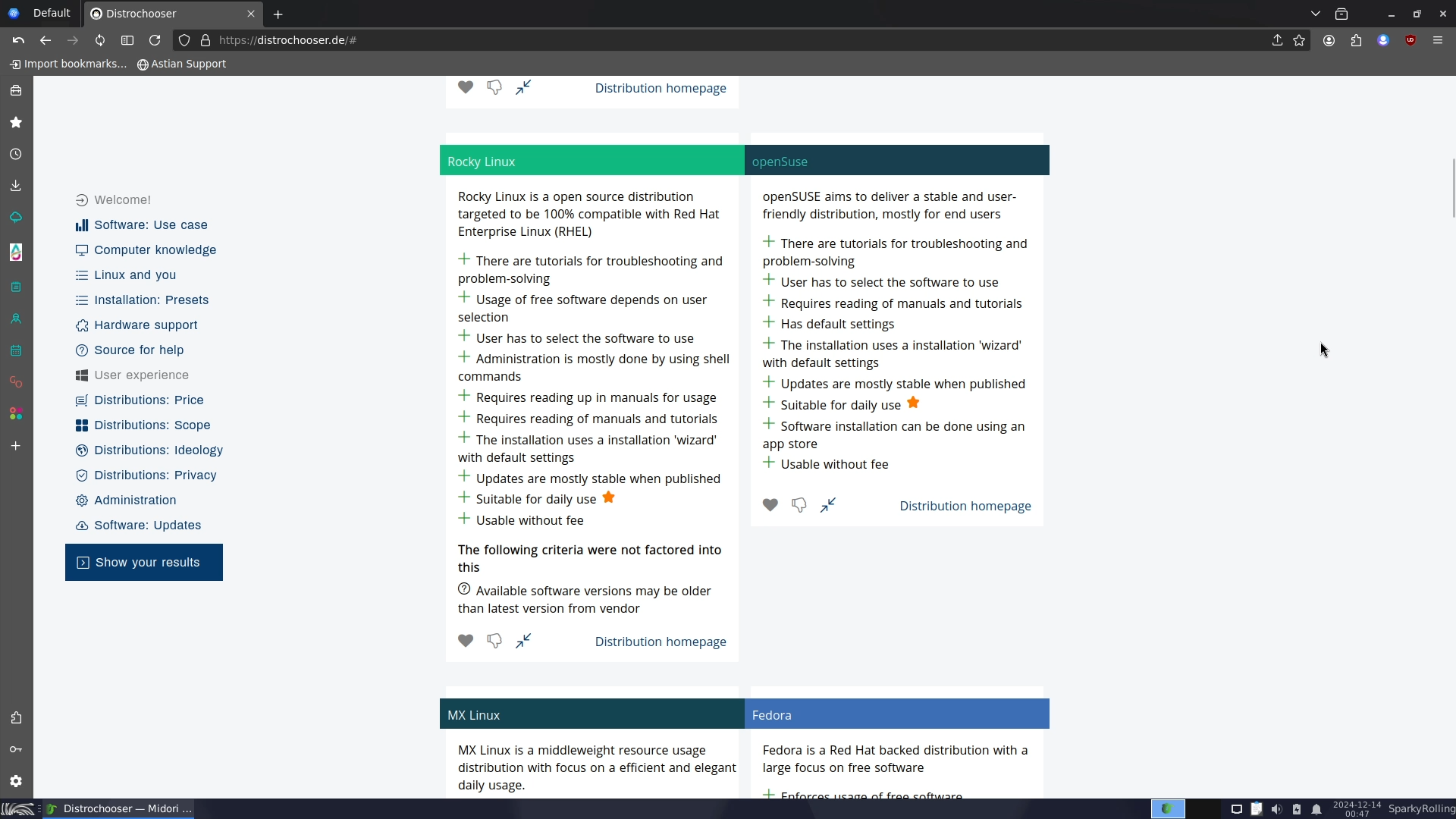
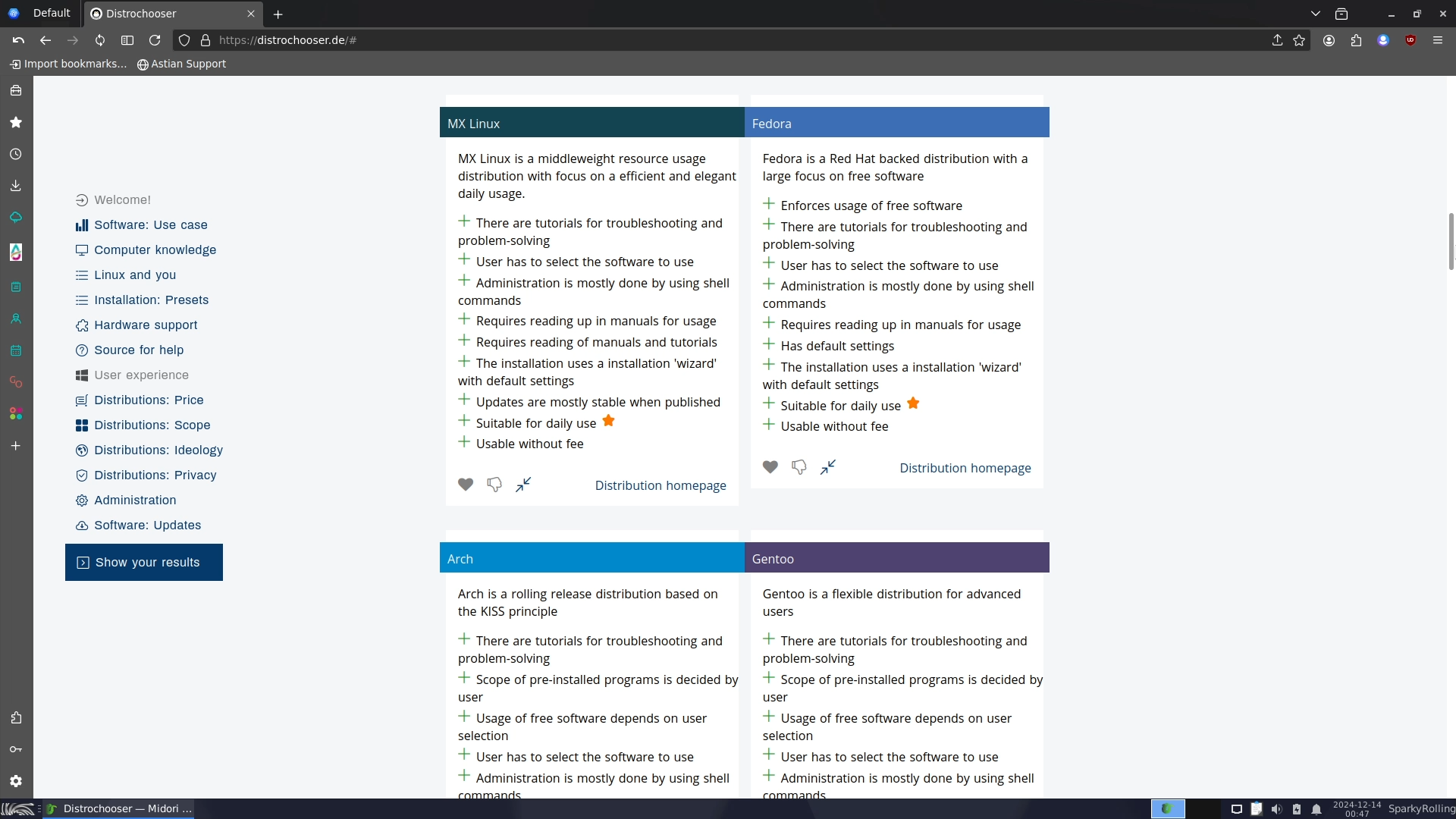
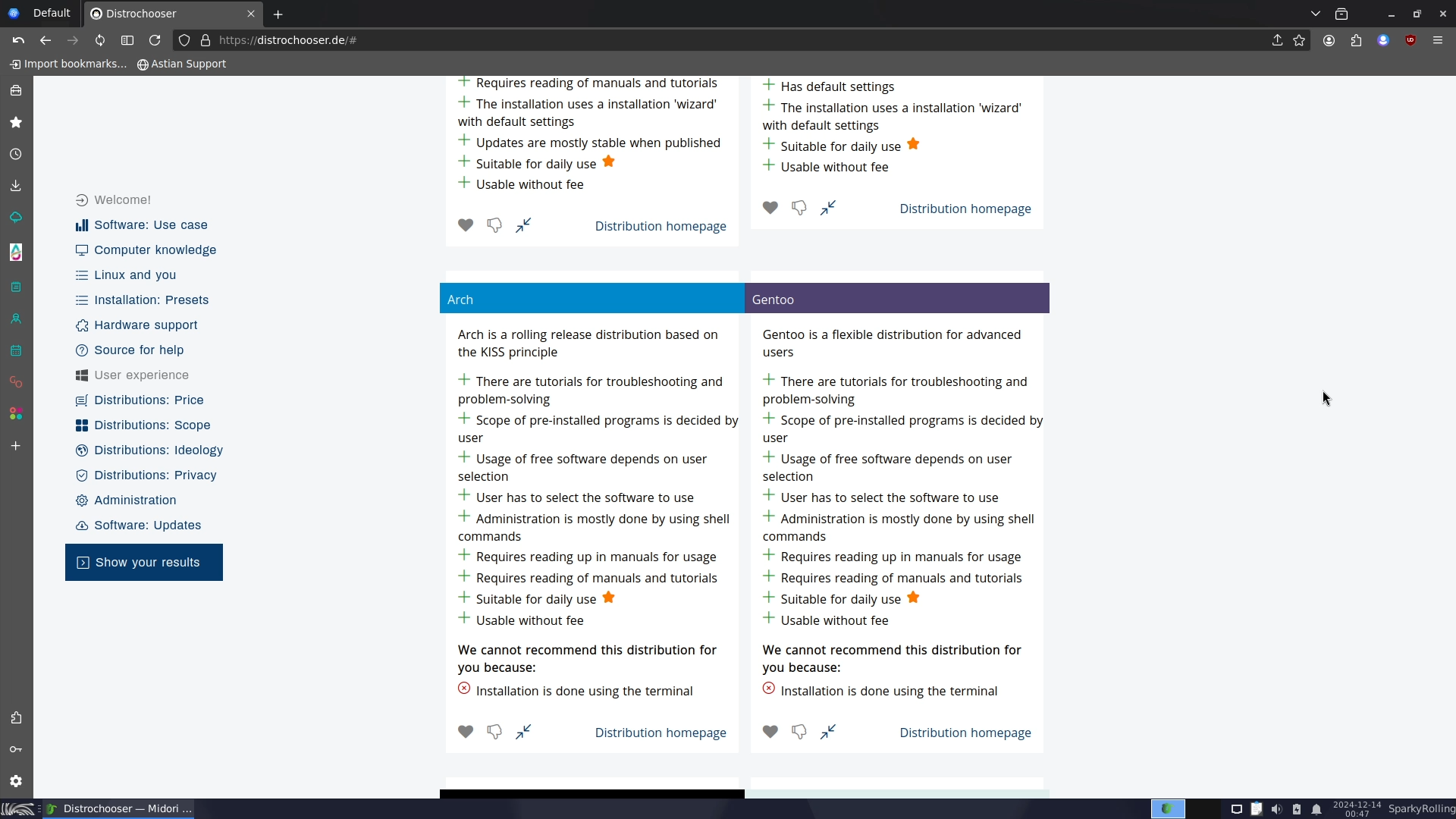
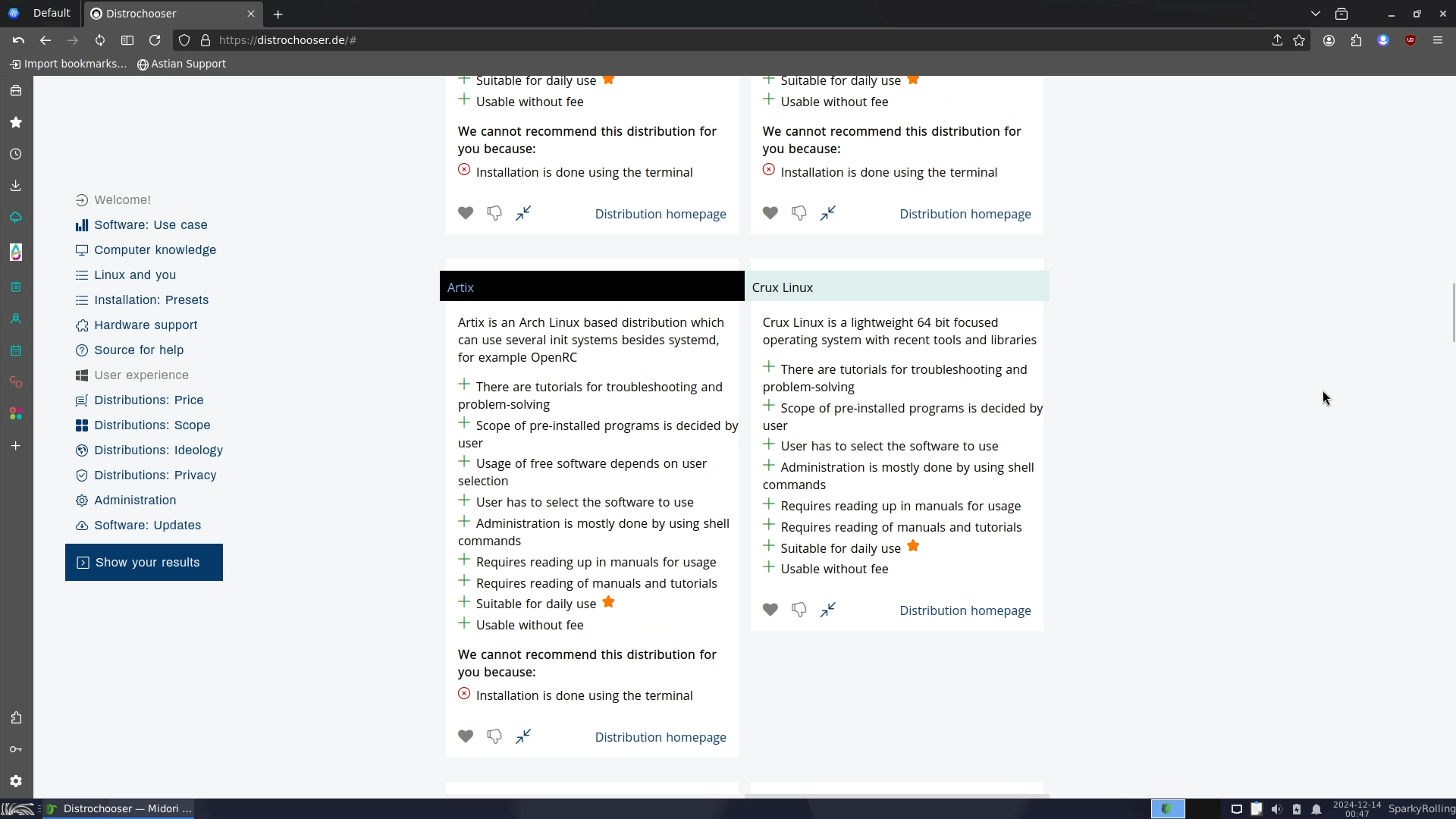
Next, I got MX Linux and Fedora, both of which are excellent options and highly recommended. Then came Arch and Gentoo, both of which are among the best Linux distros available, but they are not recommended for beginners. Following these were Artix and Crux Linux, again not suitable for beginners.
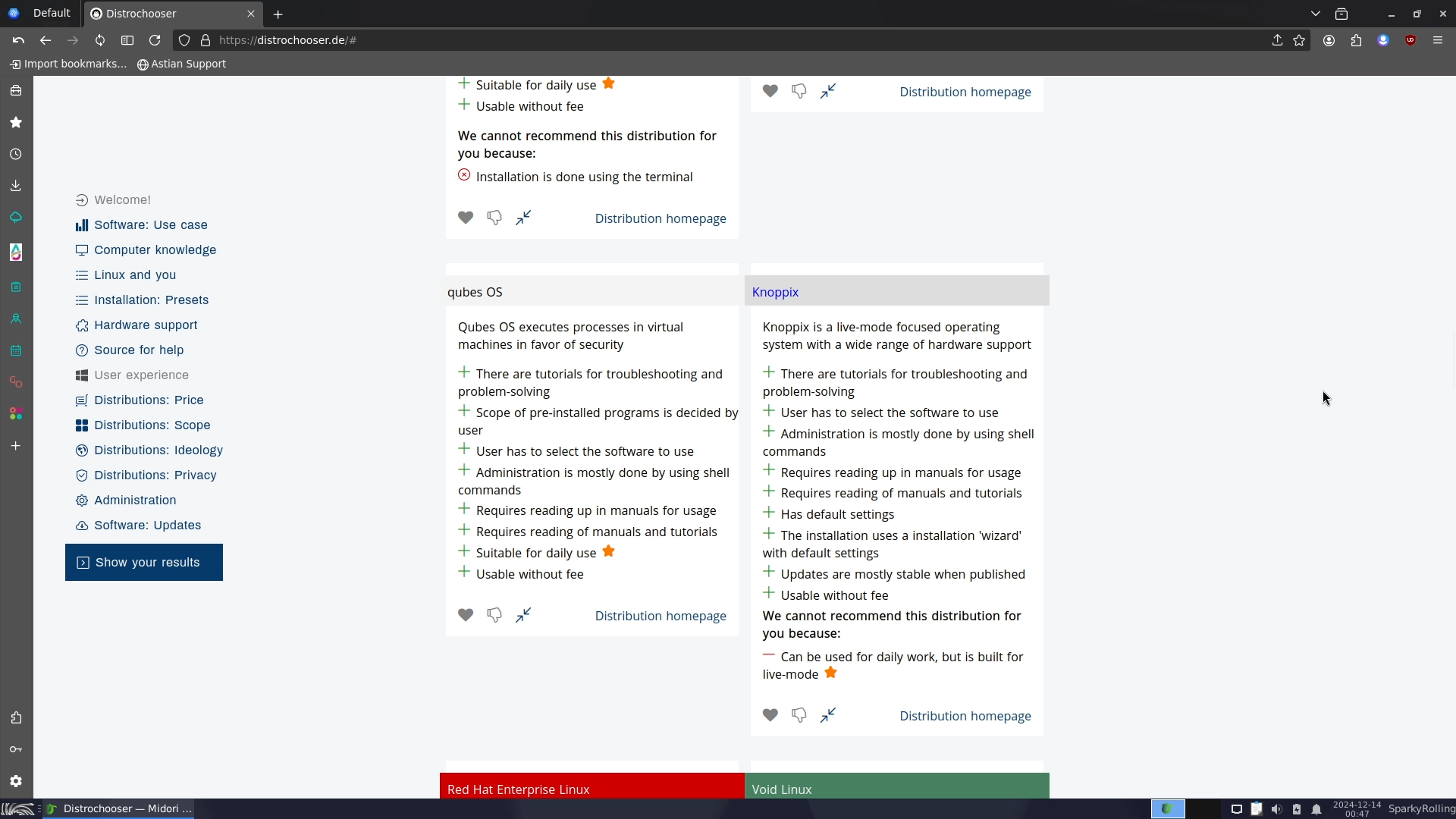
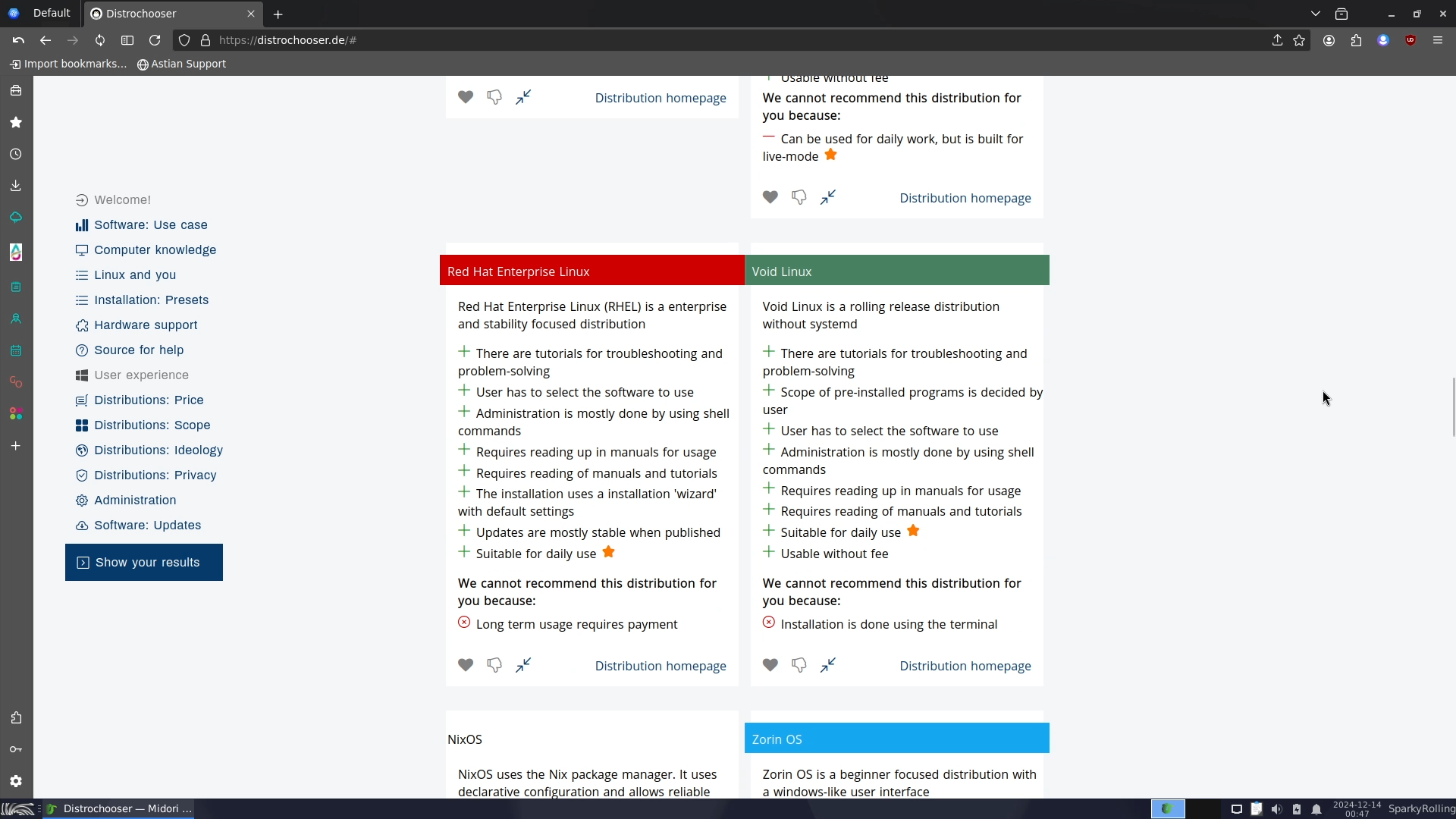
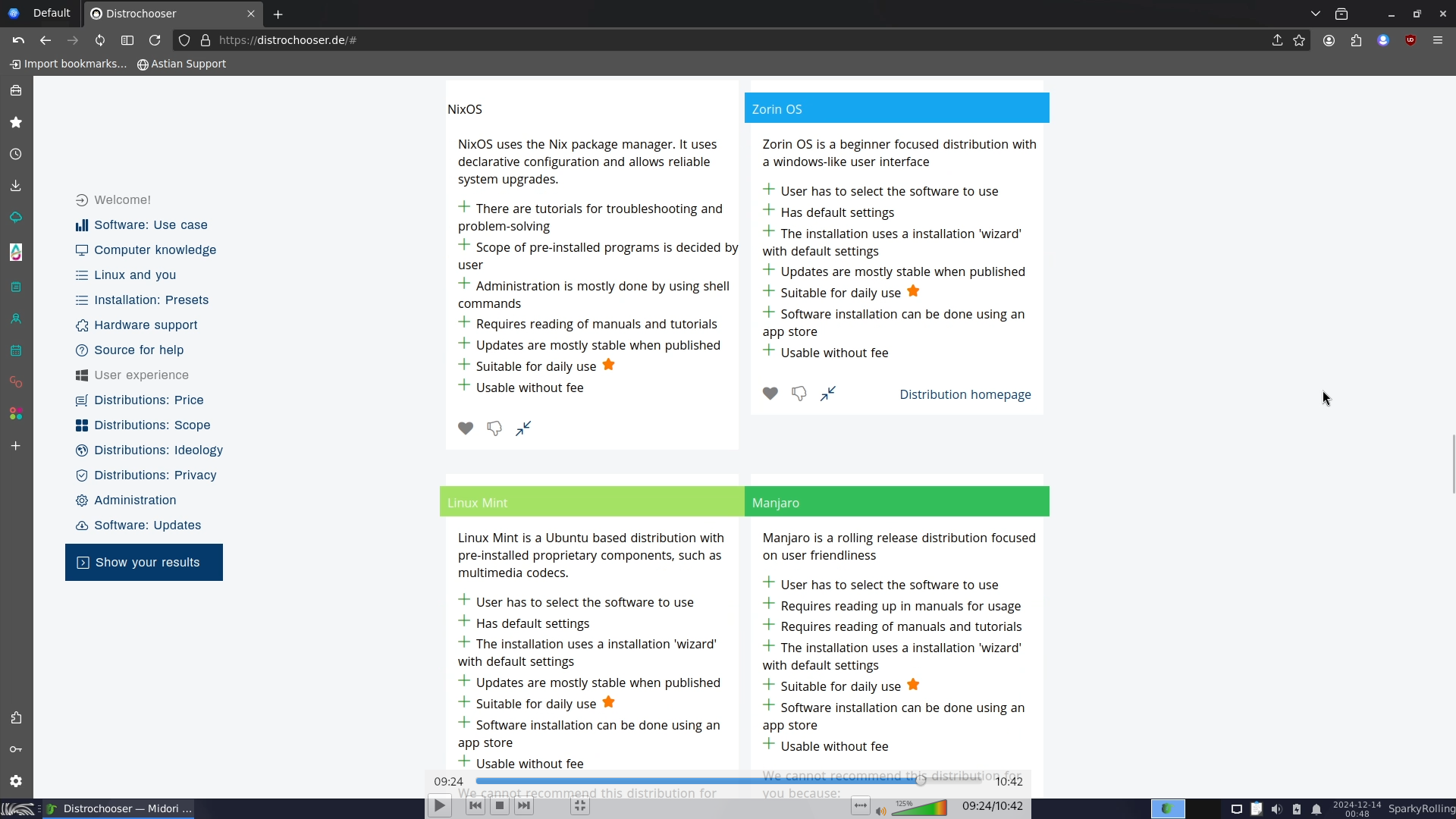
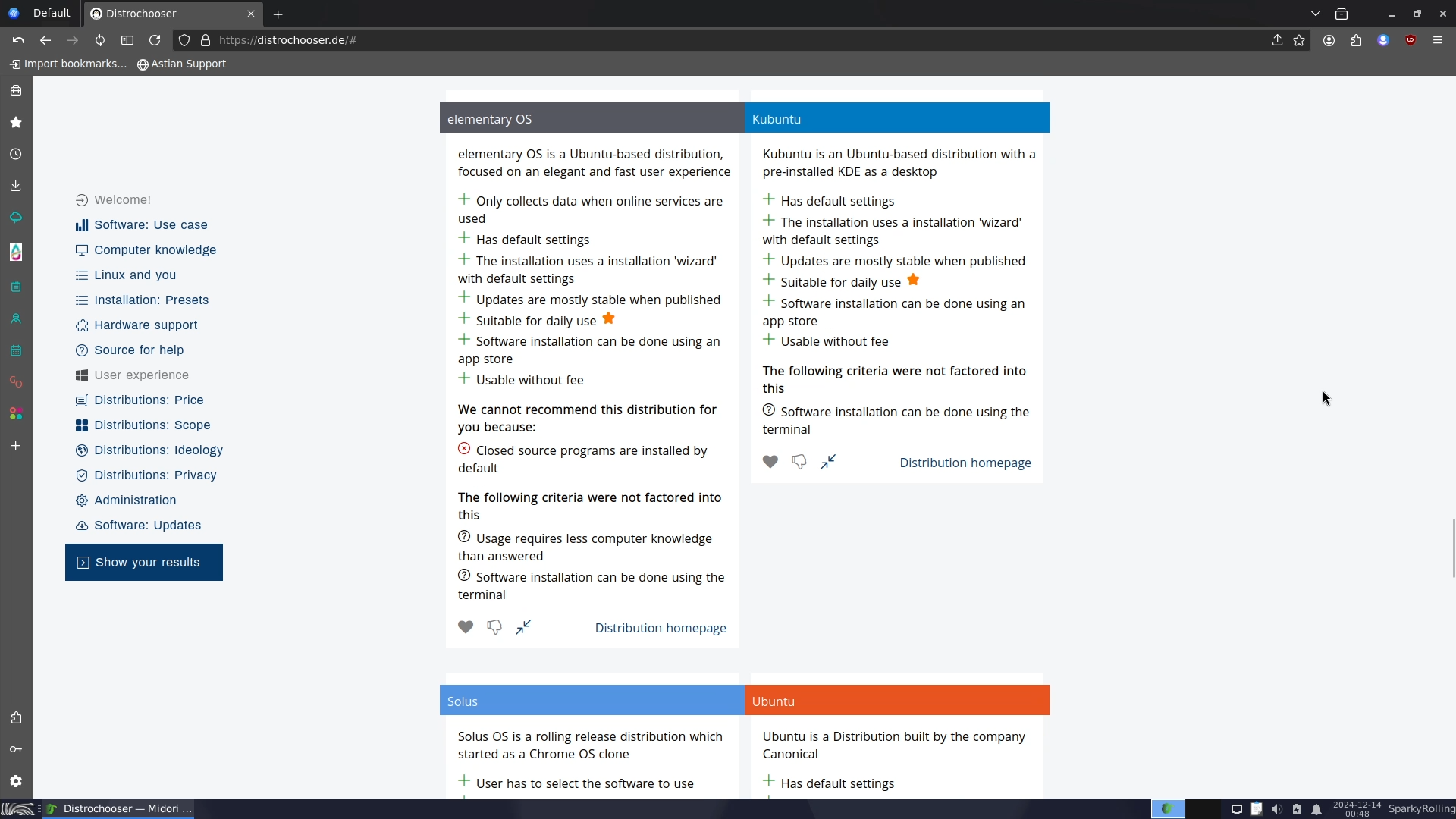
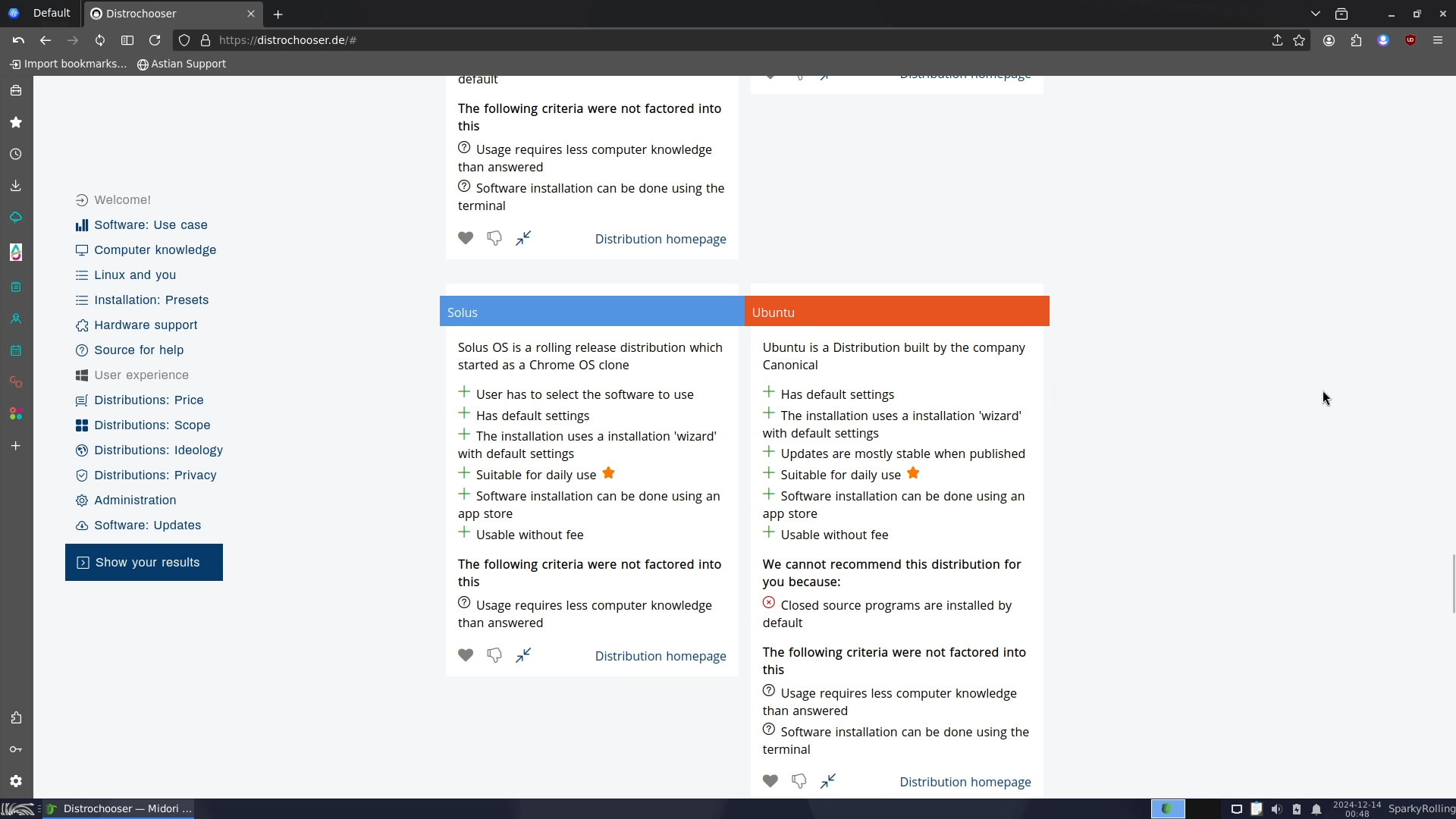
Then, I received Qubes OS, which is a fantastic choice for those looking for increased security and privacy, but for a normal user, it’s too much hassle.
However, it then suggested some distributions that are not recommended for beginners, including Knoppix, Red Hat, Void Linux, and NixOS. These are better suited for advanced and highly advanced users. Finally, the list included Deepin, PCLinuxOS, and Tails.
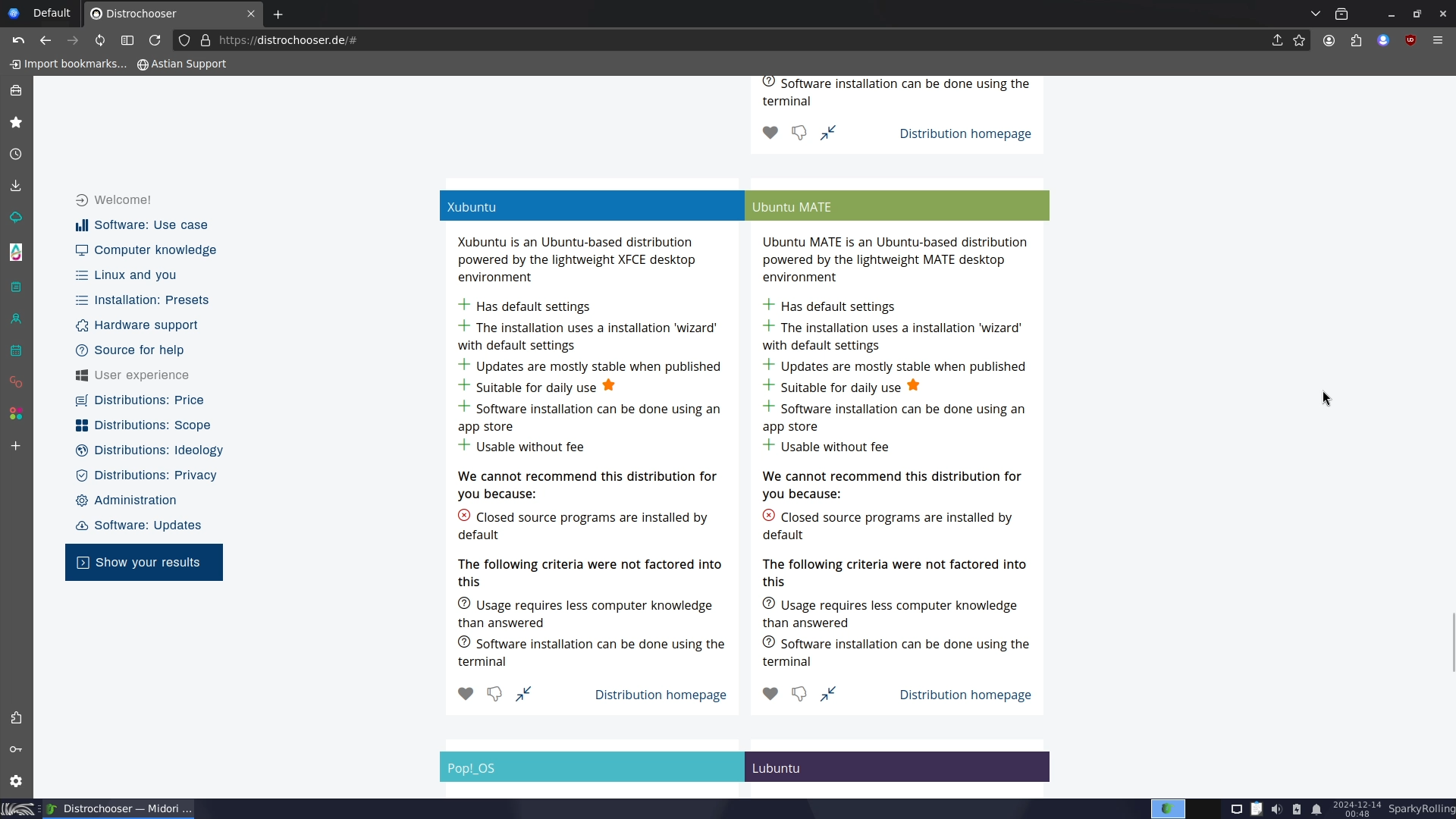
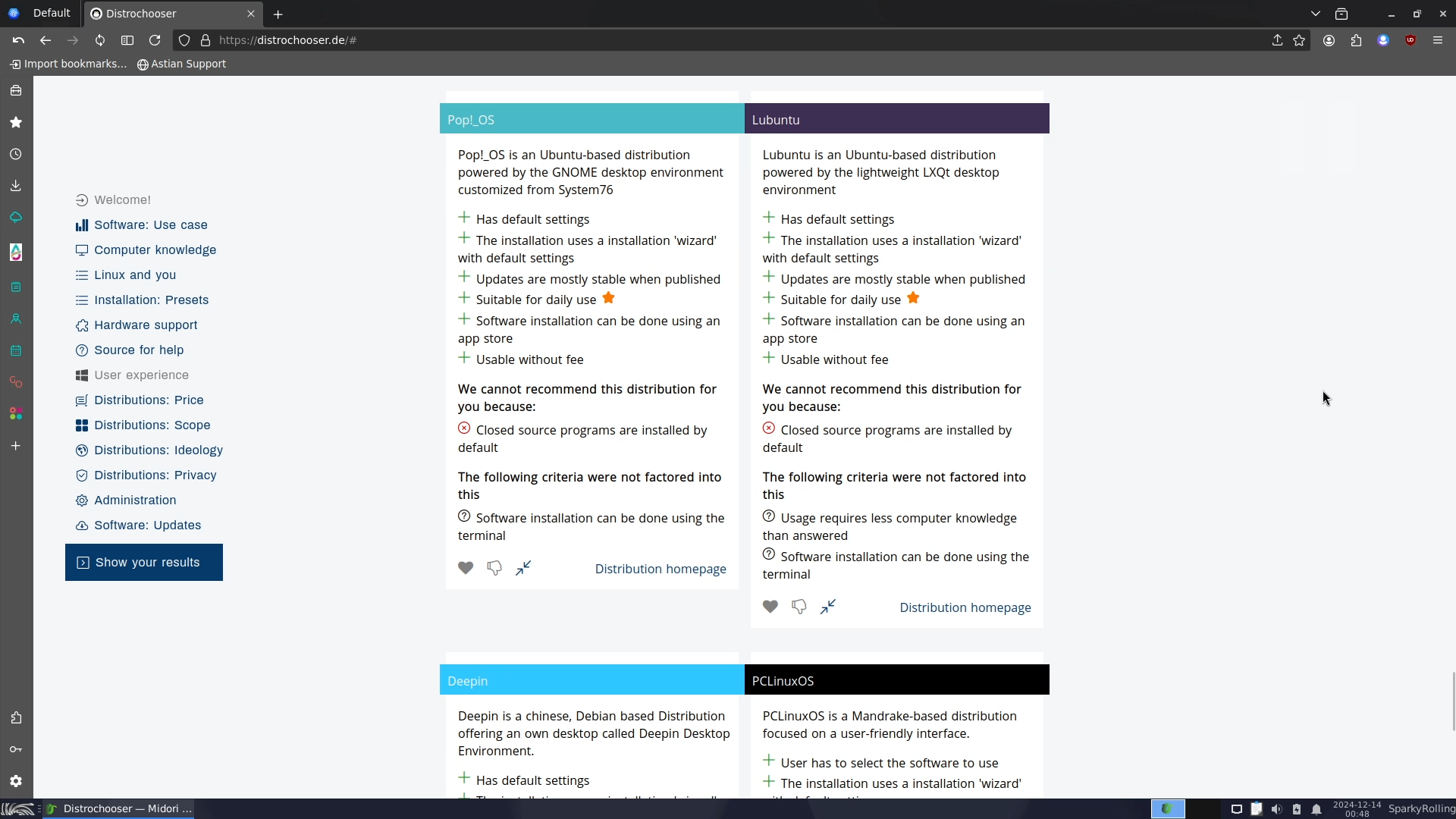
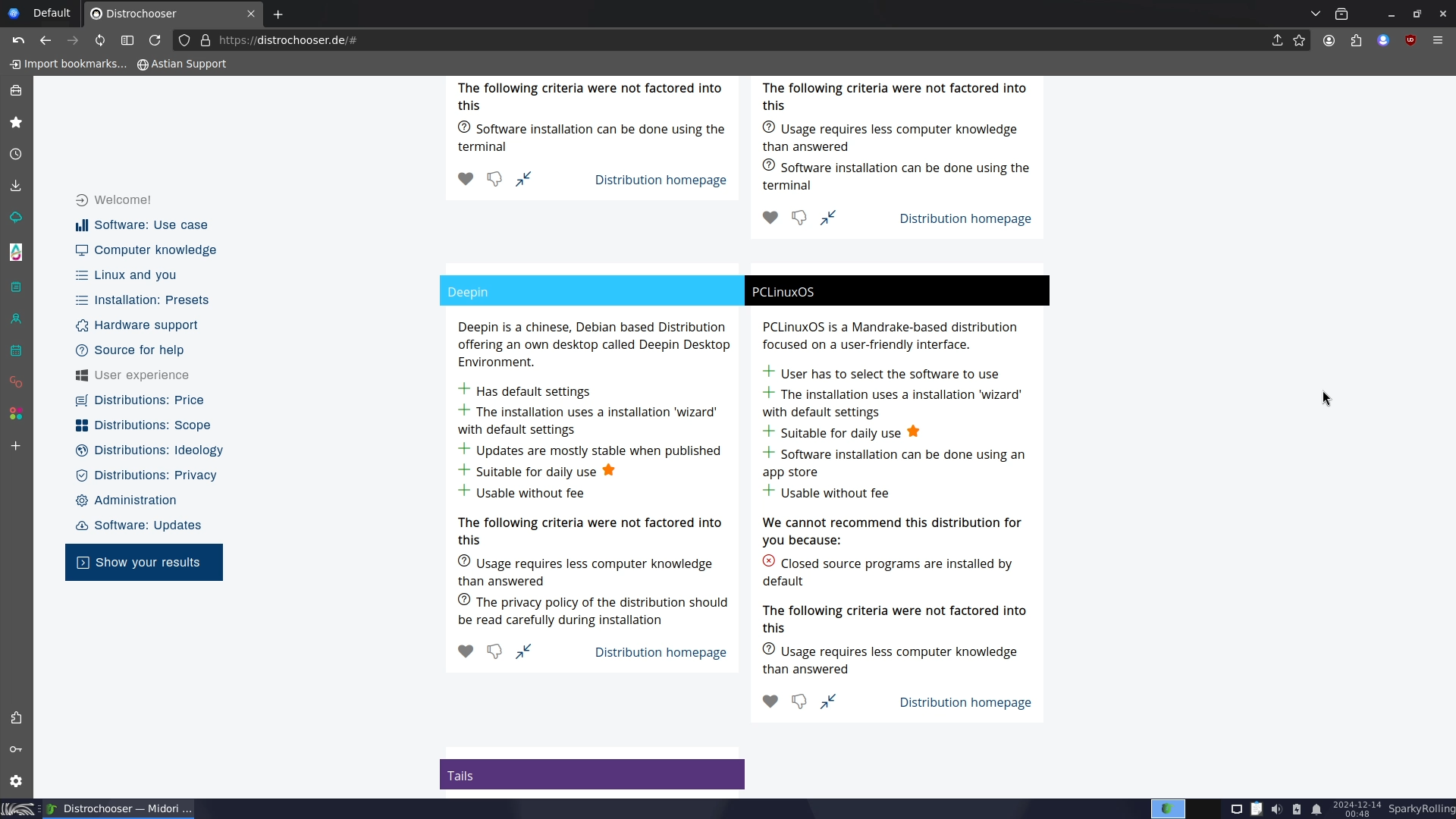
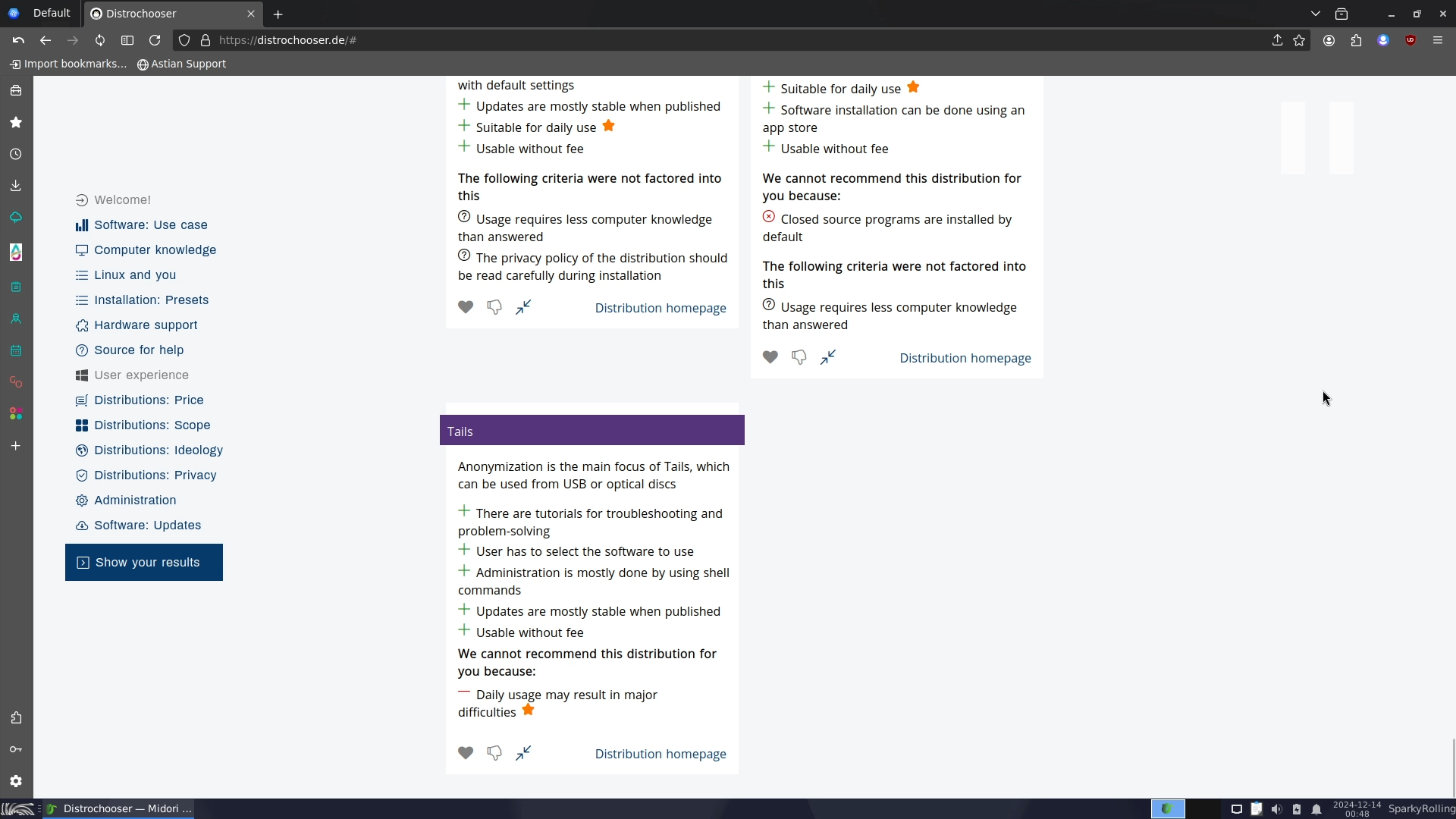
Overall, I had mixed feelings about the recommendations provided by DISTROCHOOSER because it began with some beginner-friendly options, all of which are great choices for new users. But then it also included some distributions that would be challenging for those just starting out.
So now if you ask me - Which One Is Better?
Then, in my opinion, if you are completely new to the world of FOSS and Linux, then LIBREHUNT would be your best option because it is dead simple and easy to use, and in my testing, I think the answers were more organised than what I got from DISTROCHOOSER. But on the other hand, the benefit of DISTROCHOOSER is that it lets you really dial into your specific requirements and needs; therefore, it would be better for those who have moderate knowledge of computers and operating systems. But in the end, I will encourage you to try both of them! Because if you find one or two common distro recommendations on both sites, then you have probably struck gold, and that’s a good place to begin.
But again, I will also remind you that the beauty of Linux is that you’re not locked in. You don’t have to fit a mould or adapt to the operating system you’re using. Linux can adapt to you, whether that’s right out of the box or by your own hand. And I’m pretty confident you’ll find a satisfying and comfortable Distro by using these two awesome tools.
💬 Engage With The Community:
🎬 Prefer watching? Here’s the detailed video:
🔀 Share this Article:
